Transforming a dimly lit, underutilized area into a vibrant oasis is one of gardening's most rewarding challenges. A shady garden offers a unique opportunity to cultivate a serene and cool retreat, perfect for escaping the summer heat. By embracing plants that thrive in lower light conditions and incorporating thoughtful design elements, you can create a space filled with lush textures, subtle colors, and tranquil beauty. These environments are not limitations but canvases for a different kind of splendor, where the interplay of foliage, form, and filtered light takes center stage, proving that a lack of direct sun can lead to stunning results.
1. A Woodland Path Shady Garden
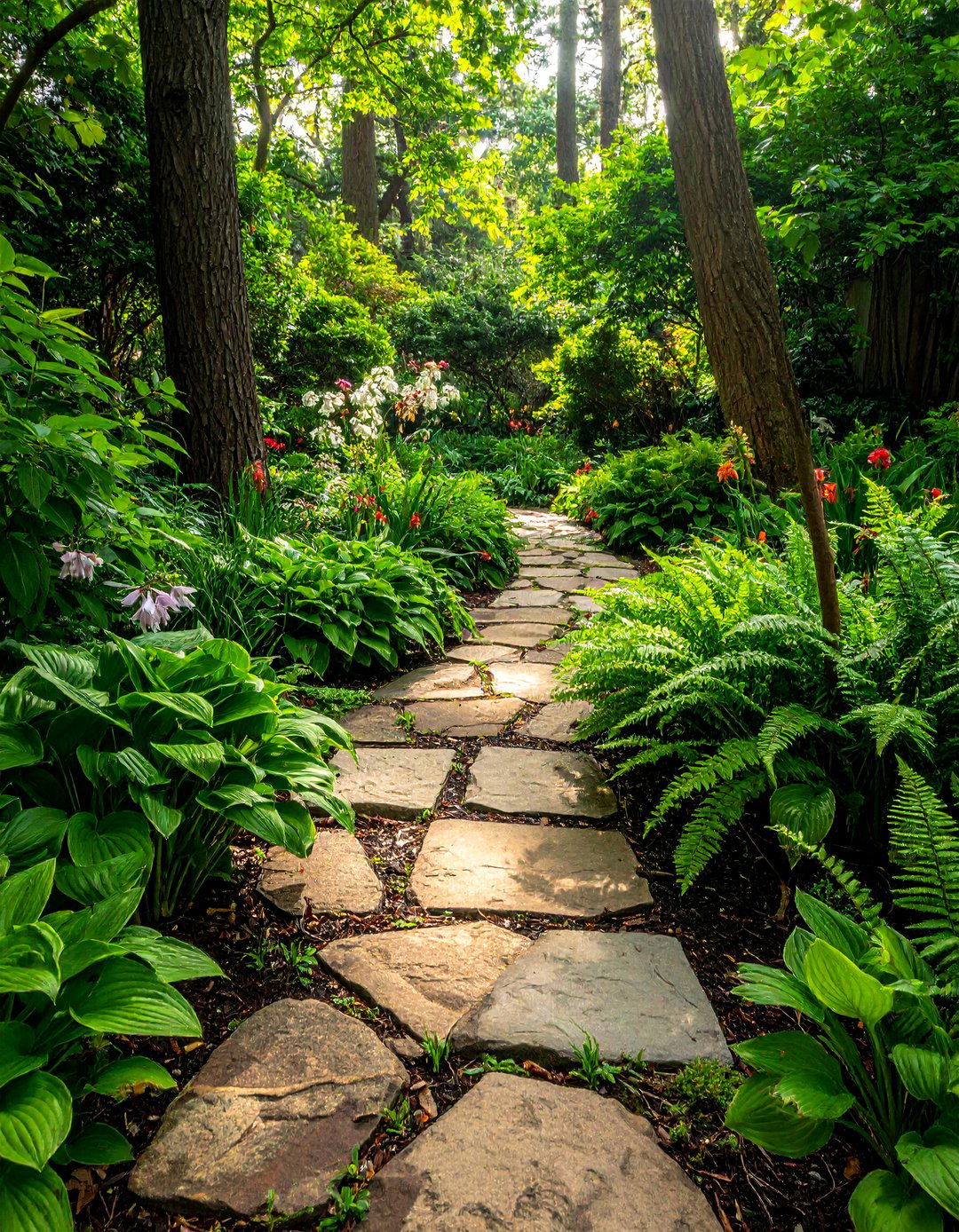
Creating a woodland path in your shady garden invites a sense of journey and discovery through the landscape. Use natural materials like wood slices, flagstone, or gravel to wind a meandering trail between planting beds. This path not only provides practical access but also draws the eye forward, making the space feel larger and more immersive. Flank the walkway with a variety of shade-loving plants such as ferns, hostas, and wild ginger to soften the edges and enhance the naturalistic feel. The path becomes the structural backbone of your design, guiding visitors through a tranquil, forest-like setting right in your own backyard.
2. A Shady Garden Water Feature
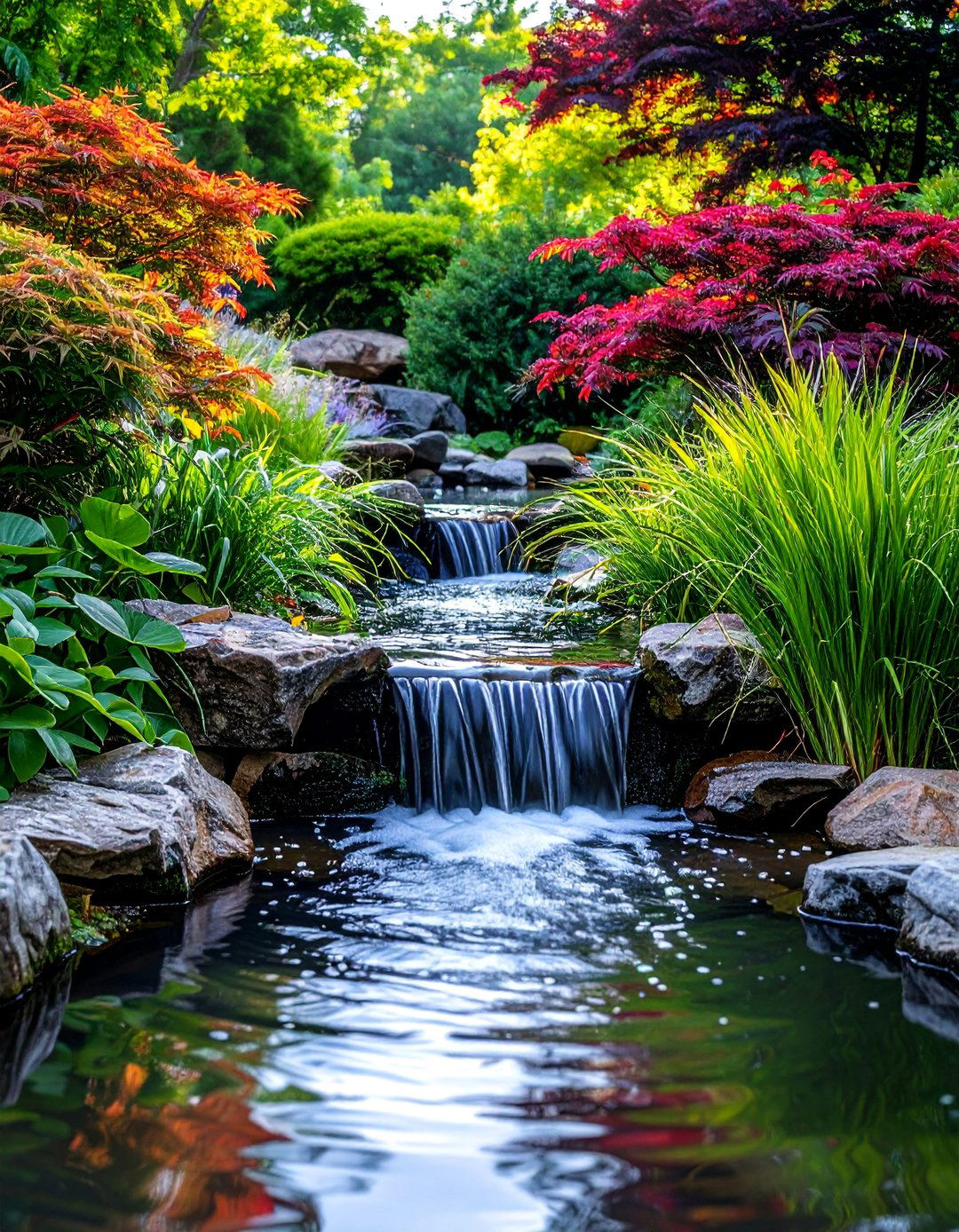
Incorporating a water feature introduces the soothing sound of moving water, which can transform a shady garden into a true sensory retreat. Consider a small, self-contained fountain, a bubbling rock, or a tranquil basin to fit the scale of your space. The gentle splashing masks neighborhood noise and creates a peaceful ambiance. Surround the feature with water-loving, shade-tolerant plants like Japanese forest grass and ligularia, whose bold leaves will reflect beautifully on the water's surface. This element adds a focal point, attracts wildlife, and enhances the cool, calming atmosphere inherent to a shaded environment, making it feel lush and alive.
3. A Container-Based Shady Garden
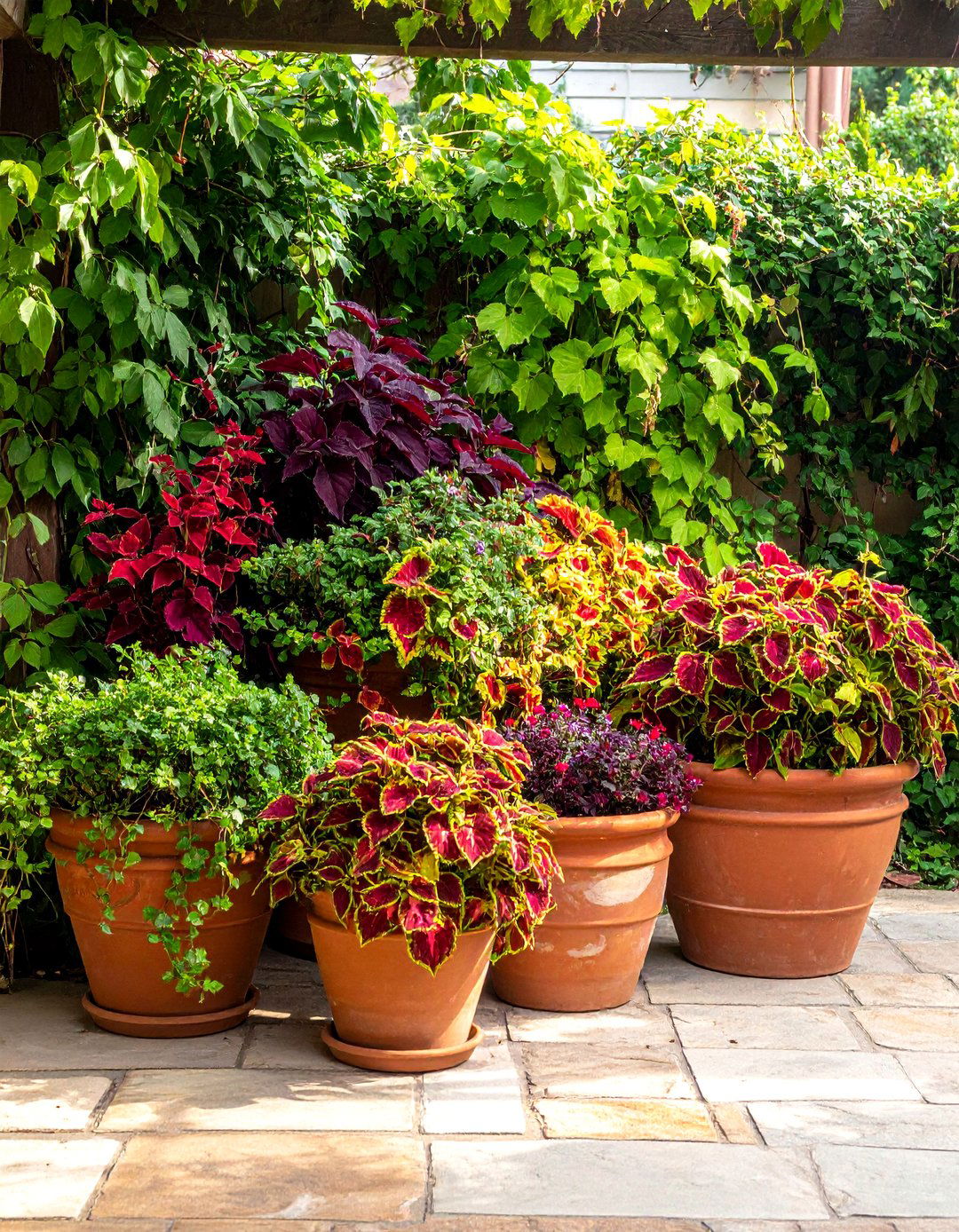
For those with limited space or poor soil, a container-based shady garden offers incredible flexibility and design potential. Grouping pots of various sizes, colors, and textures can create a stunning, layered display on a patio, balcony, or any dark corner. This approach allows you to control the soil mix perfectly for each plant. Fill your containers with vibrant coleus, elegant fuchsias, and trailing ivy to add pops of color and cascading forms. The ability to move pots around allows you to easily refresh the look or respond to subtle changes in light, ensuring your shady retreat remains dynamic and beautiful throughout the seasons.
4. A Shady Garden Seating Nook
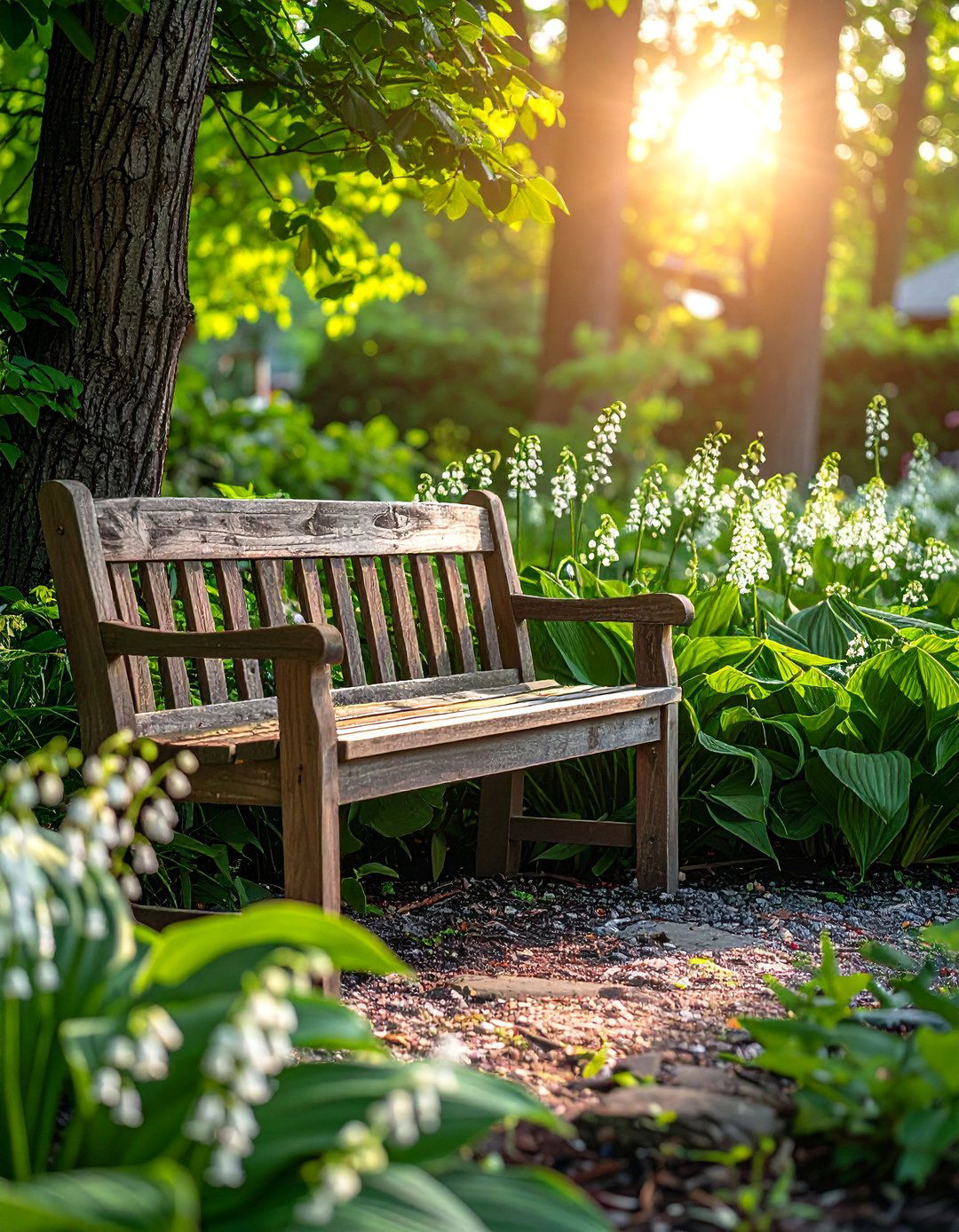
Designing a dedicated seating nook turns your shady garden into a functional outdoor room. A simple stone bench, a pair of classic Adirondack chairs, or a small bistro set can create an inviting destination. Position the seating where it offers the best view of your garden's textures and forms. Surround the area with fragrant, shade-tolerant plants like lily-of-the-valley or sweet woodruff to add a delightful scent to the cool air. This purposeful space encourages you to spend more time enjoying your lush surroundings, providing a perfect spot for quiet reflection, reading, or enjoying a cool drink on a warm day.
5. A Hostas and Ferns Shady Garden
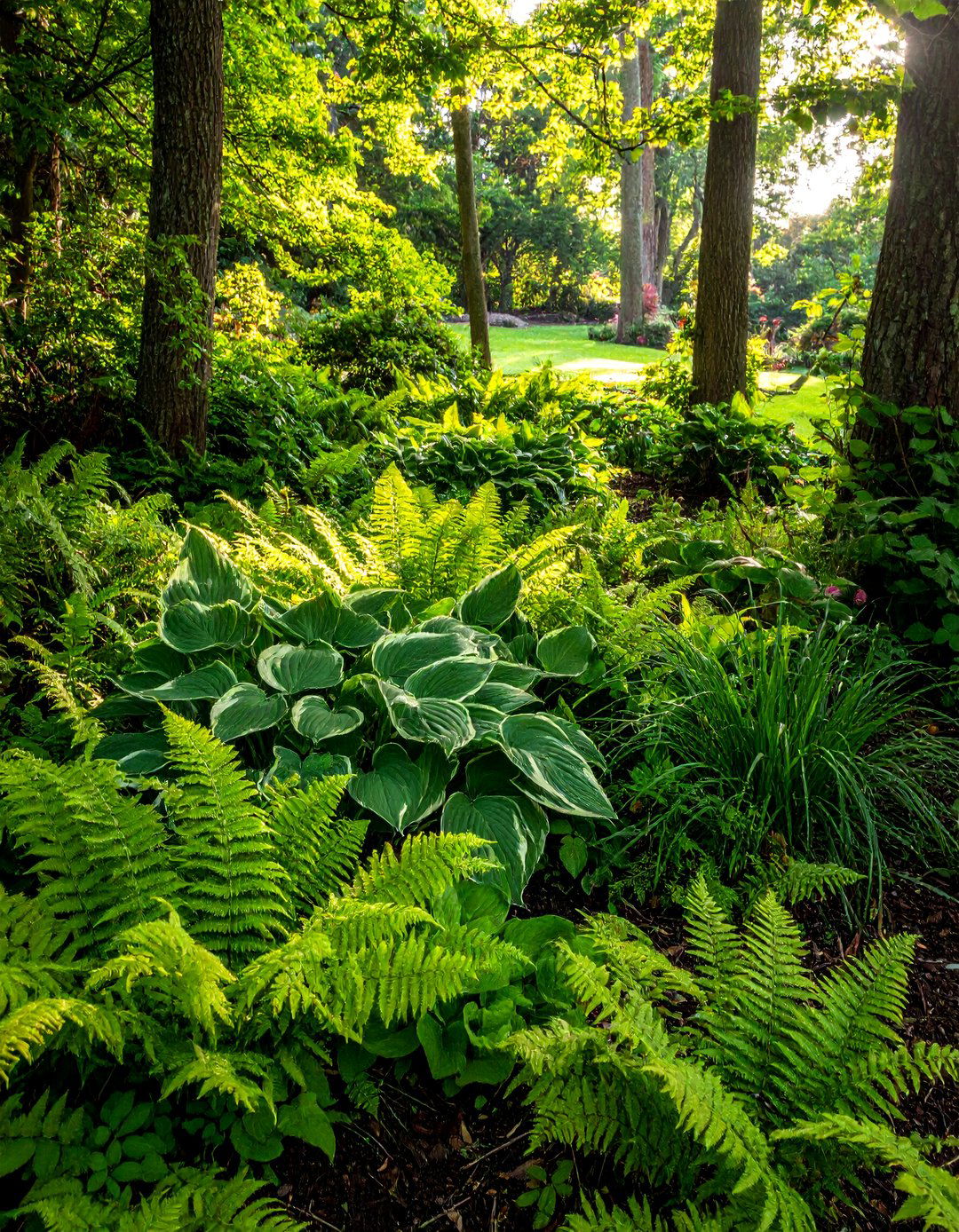
Combining hostas and ferns is a classic strategy for creating a captivating shady garden with rich texture and form. The broad, architectural leaves of hostas, available in shades from deep green to chartreuse and variegated patterns, provide a stunning contrast to the delicate, feathery fronds of ferns. Plant them in sweeping drifts or layered groupings to mimic a natural forest floor. This pairing is low-maintenance and reliable, filling in shady areas with a lush, green tapestry. The interplay between the bold hosta foliage and the airy ferns creates a dynamic yet harmonious visual that is the cornerstone of many successful shade designs.
6. A Vertical Shady Garden Wall
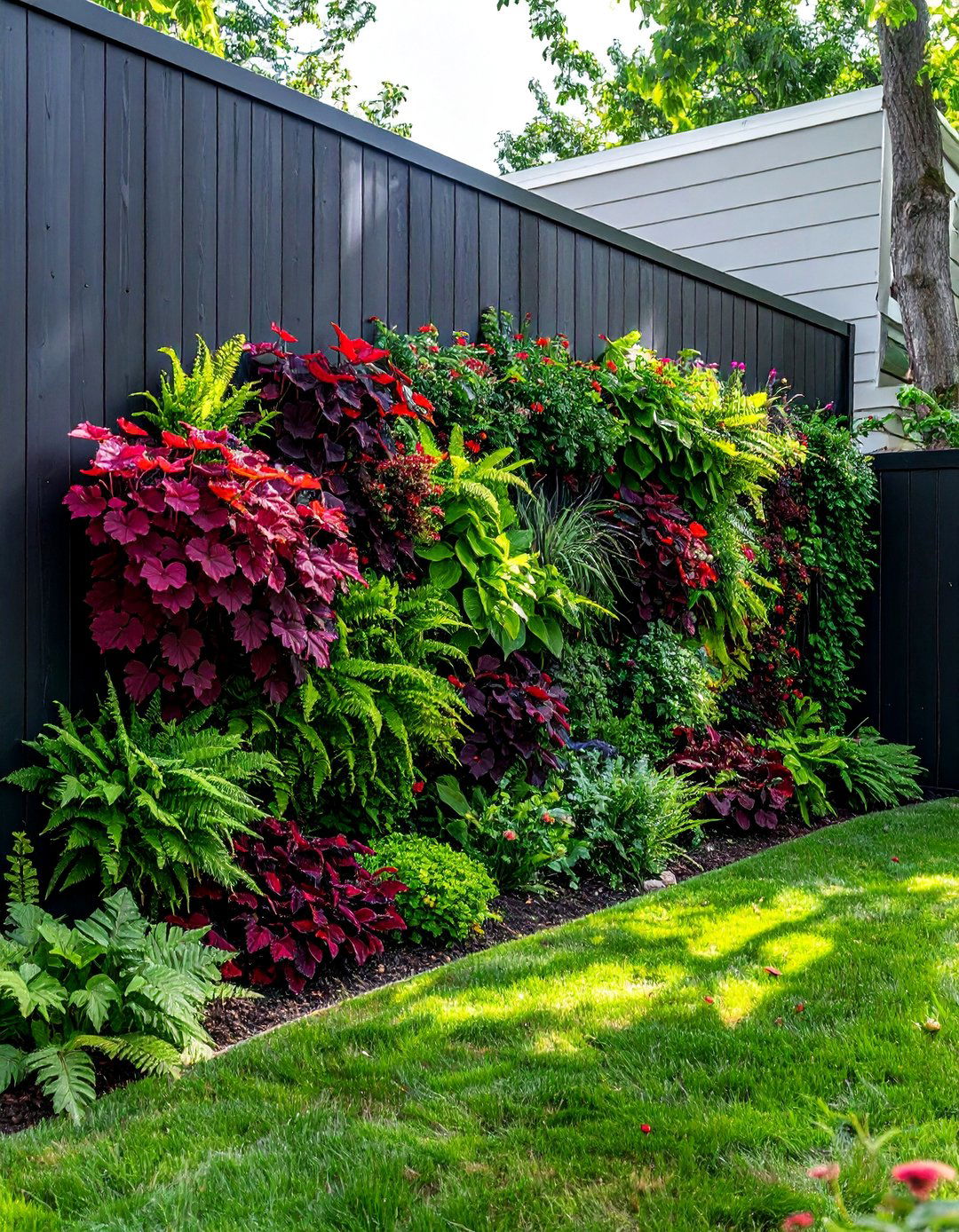
When ground space is at a premium, a vertical shady garden wall becomes an innovative and beautiful solution. Using a trellis, pocket planters, or a dedicated living wall system, you can grow a variety of shade-loving plants upwards. This technique is perfect for dressing up a bare fence, a dull wall, or the side of a shed. Plant with trailing species like ivy, climbing hydrangeas, or fill pockets with compact ferns, heucheras, and begonias for a tapestry of color and texture. A vertical garden draws the eye upward, adding a dramatic and space-saving element that transforms a forgotten surface into a thriving green feature.
7. A Moss and Stone Shady Garden
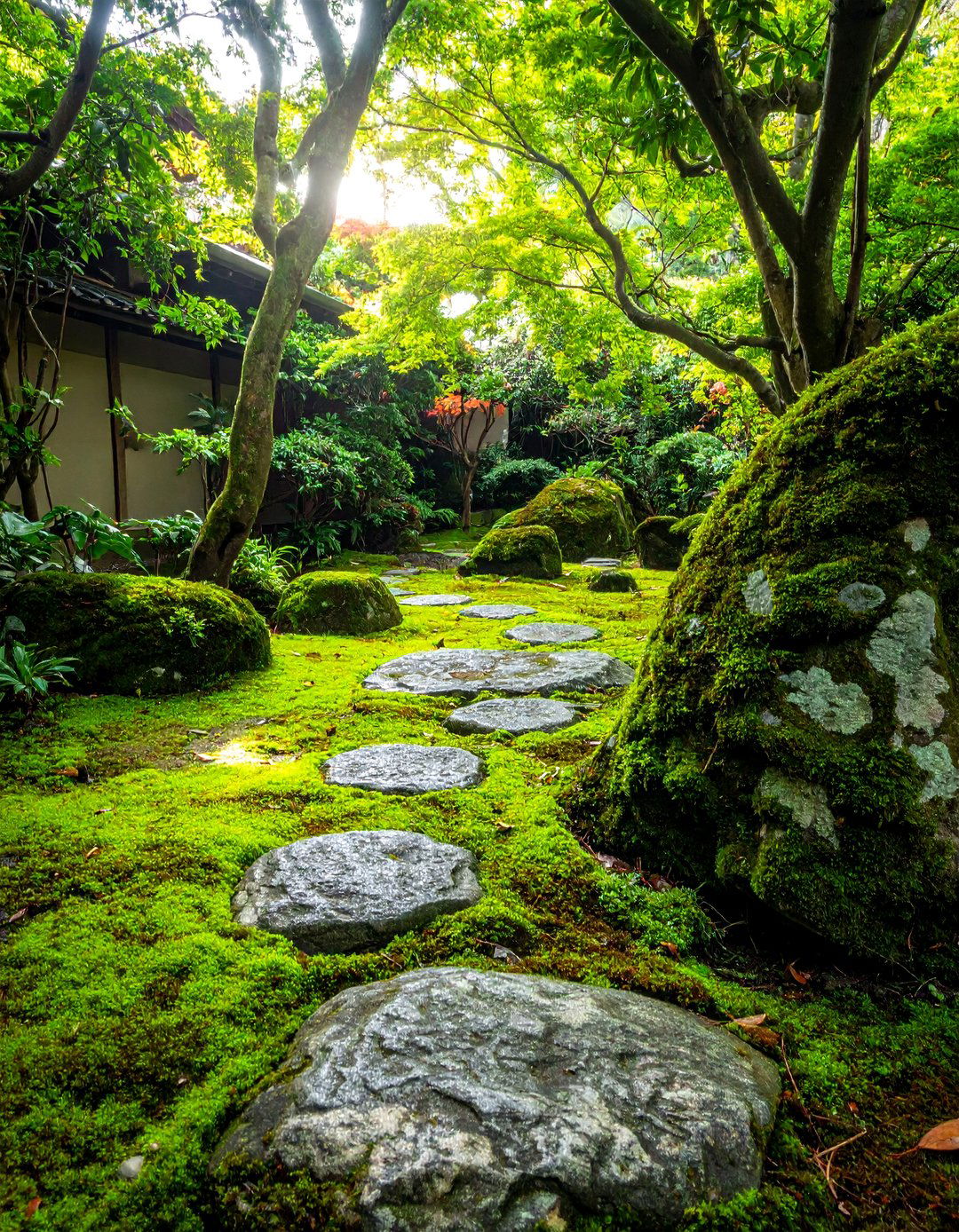
Embracing moss and stone creates an ancient, serene atmosphere reminiscent of a Japanese moss garden or a primeval forest floor. In damp, shady areas where grass struggles, moss can be encouraged to grow between pavers, over rocks, and as a soft groundcover. Strategically place large, moss-covered stones or boulders to serve as natural sculptures and focal points. This combination requires minimal maintenance once established and offers a unique, velvety texture underfoot. The deep greens and rugged forms of the stone and moss provide a tranquil, meditative quality, perfect for a quiet corner of your shady garden retreat.
8. A Japanese-Inspired Shady Garden
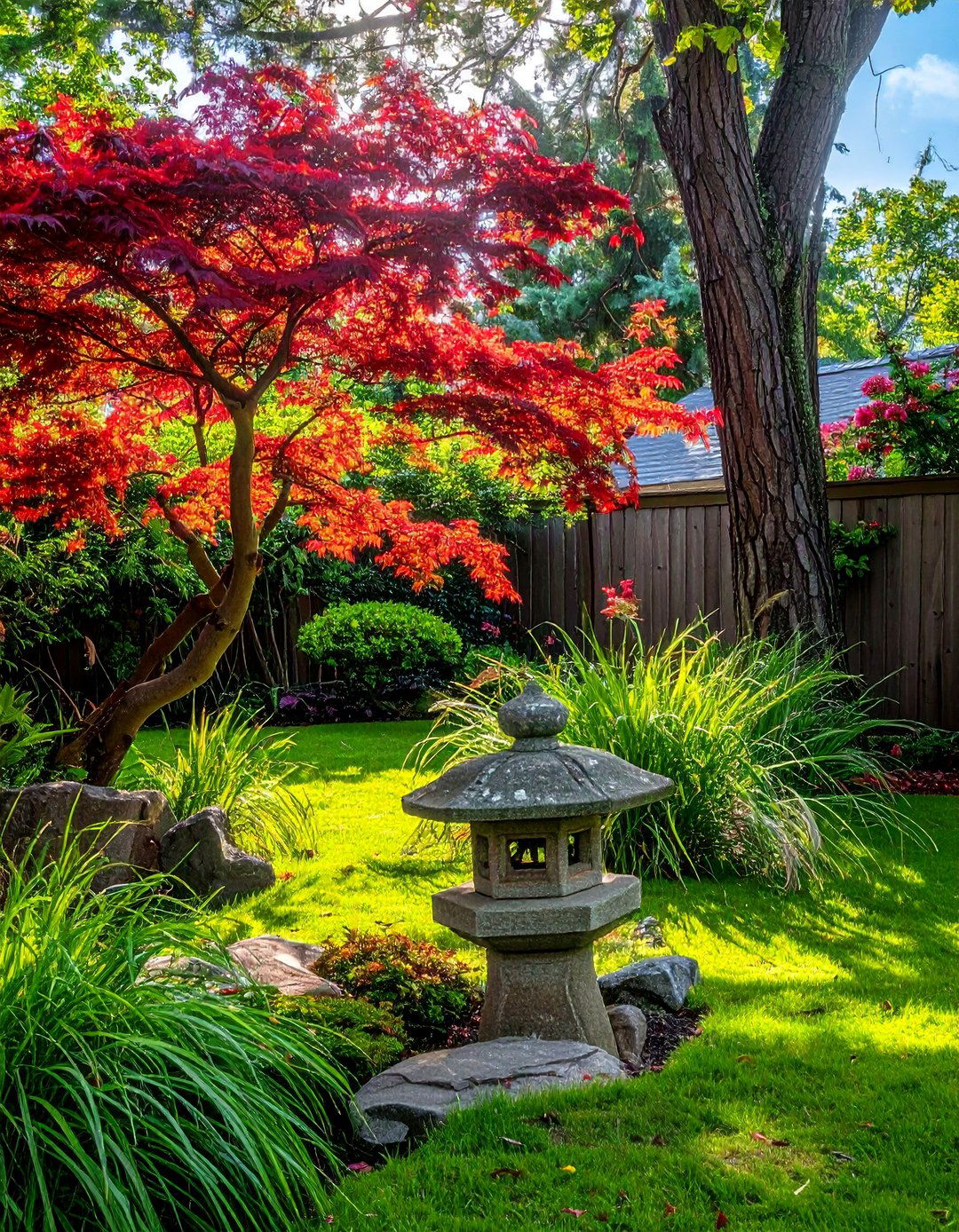
A Japanese-inspired design brings a sense of tranquility, balance, and artistry to a shady garden. This style emphasizes natural forms, subtle details, and a carefully curated plant palette. Utilize shade-loving Japanese maples for their graceful structure and delicate foliage, alongside mondo grass, Japanese forest grass, and various ferns. Incorporate key elements like a stone lantern, a bamboo water feature (shishi-odoshi), or a simple raked gravel area to evoke a feeling of serenity. The focus is on creating a harmonious composition of plants, stone, and water that encourages quiet contemplation and appreciation of nature’s understated beauty in the shade.
9. A Shady Garden with Flowering Shrubs
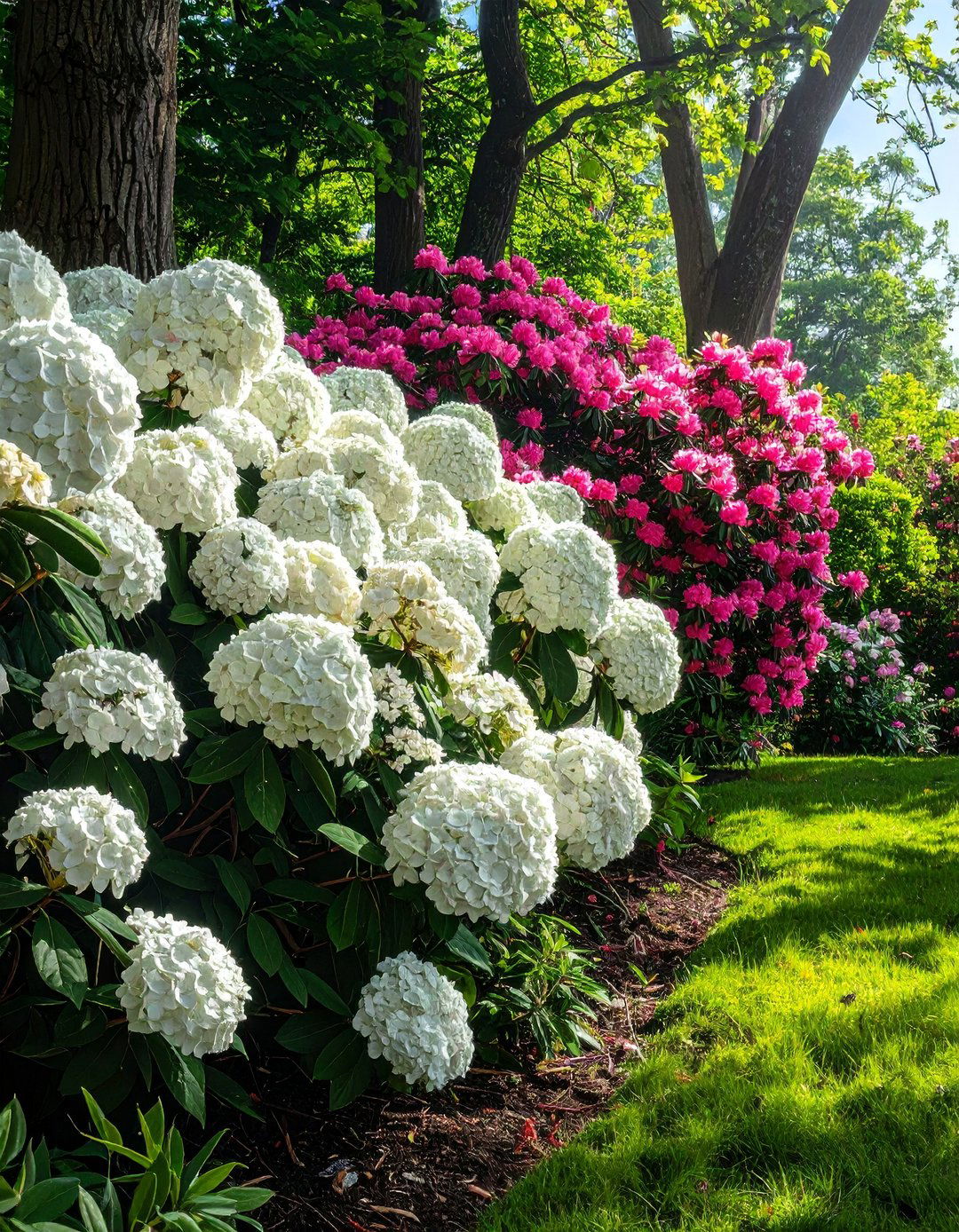
Flowering shrubs are essential for adding structure, height, and seasonal color to a shady garden. Many varieties thrive without direct sun, offering beautiful blooms to brighten dim corners. Consider planting hydrangeas, which produce large, dramatic flower heads in summer, or rhododendrons and azaleas for their spectacular spring displays. For fragrance, daphne is an excellent choice with its intoxicatingly sweet-smelling winter or spring blossoms. These shrubs create a layered backdrop for smaller perennials and groundcovers, ensuring your shady space has visual interest and floral beauty throughout the different seasons of the year, providing a strong structural framework for the entire design.
10. A Bright Foliage Shady Garden
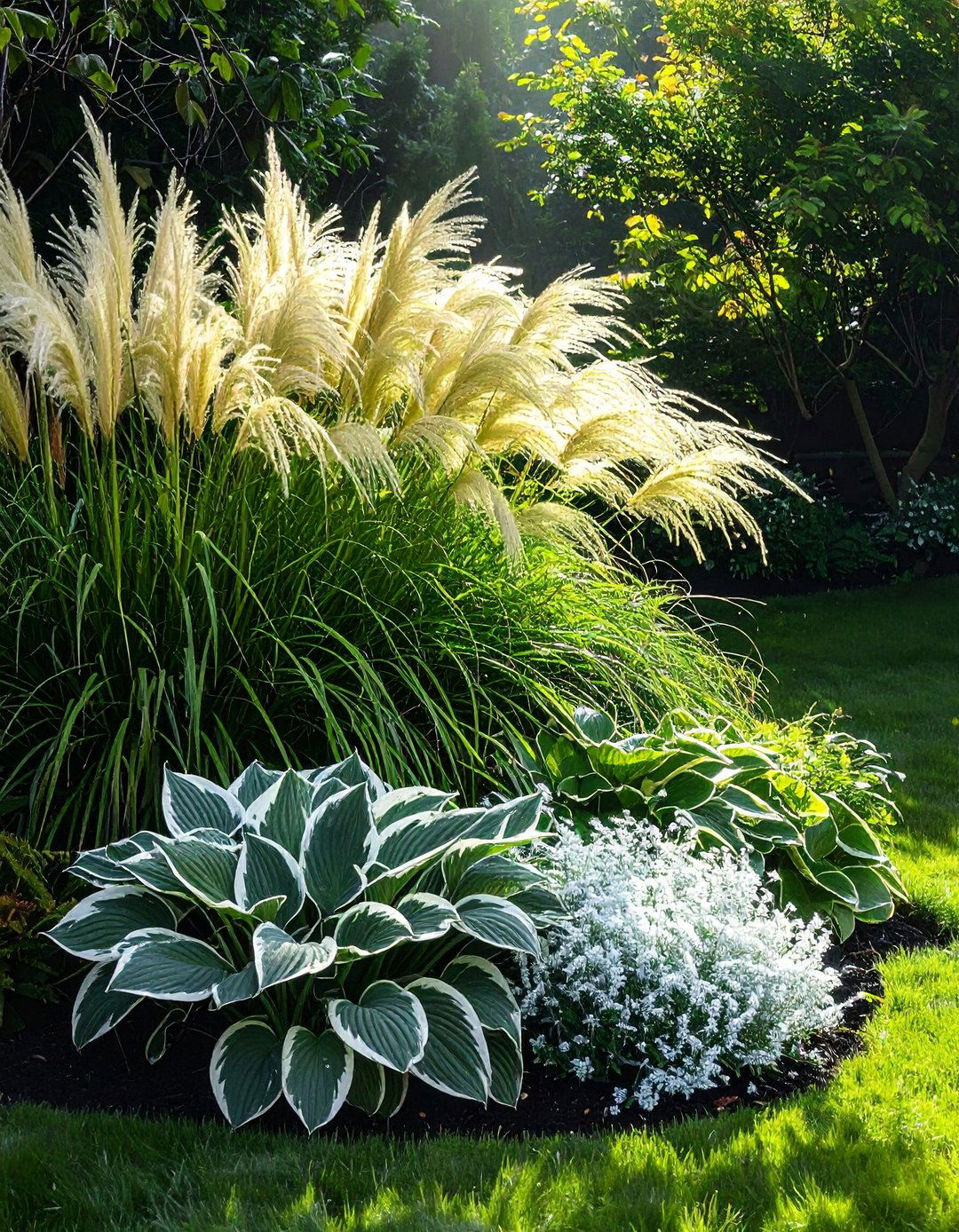
To illuminate a dark area, focus on creating a shady garden with bright foliage. Plants with chartreuse, gold, white, or silver leaves act like natural spotlights, reflecting light and making the space feel more vibrant. Japanese forest grass 'Aureola' offers cascading blades of gold and green, while variegated hostas like 'Patriot' have crisp white edges. Heucheras, or coral bells, come in an astonishing range of bright colors, from lime green to deep burgundy. Brunnera 'Jack Frost' provides stunning silver, heart-shaped leaves. By strategically planting these luminous varieties, you can effectively brighten up even the deepest shade, creating a garden that glows from within.
11. A Raised Bed Shady Garden
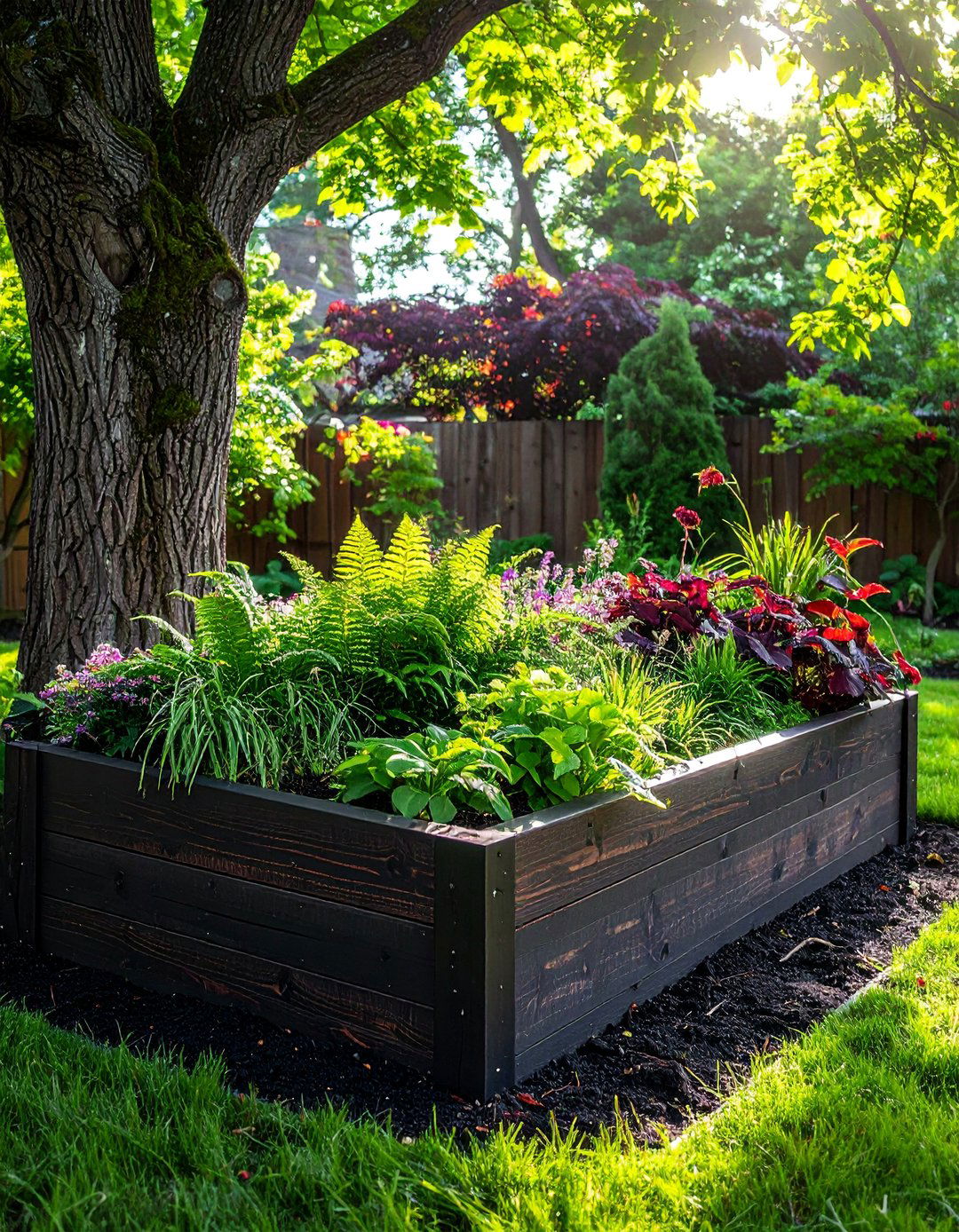
Building raised beds is a practical and attractive solution for overcoming common shady garden challenges like poor drainage, compacted soil, or invasive tree roots. By elevating the planting area, you can fill the beds with high-quality, amended soil tailored to the needs of shade-loving plants. This control over the growing medium ensures healthier, more vigorous growth. The bed structure itself, whether made from wood, stone, or metal, adds a clean, architectural element to the garden design. Raised beds make gardening more accessible and can define different zones within your shady retreat, creating an organized and highly productive planting space.
12. A Shady Garden Dry Creek Bed
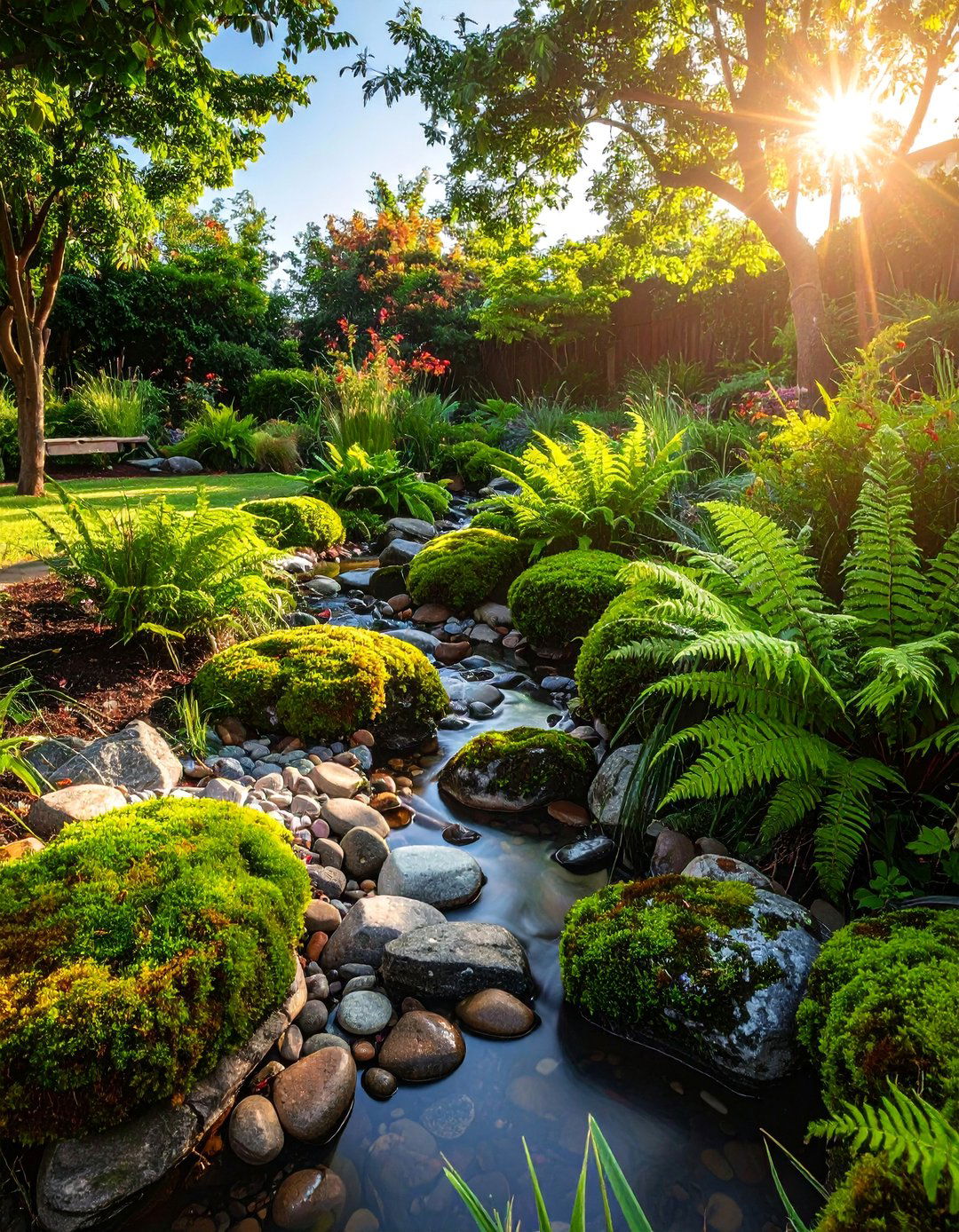
A dry creek bed is a fantastic hardscaping feature that adds visual interest and solves drainage issues in a shady garden. Constructed from a variety of river rocks, pebbles, and small boulders, it mimics the appearance of a natural streambed. This feature can guide water runoff during heavy rains while creating a strong, curving line that draws the eye through the landscape when dry. Plant the edges with moisture-loving, shade-tolerant plants like ferns, astilbes, and mosses to soften the stone and enhance the naturalistic effect. It’s a low-maintenance, high-impact element that adds structure and character to any shady area.
13. A Naturalistic Shady Garden Under Trees
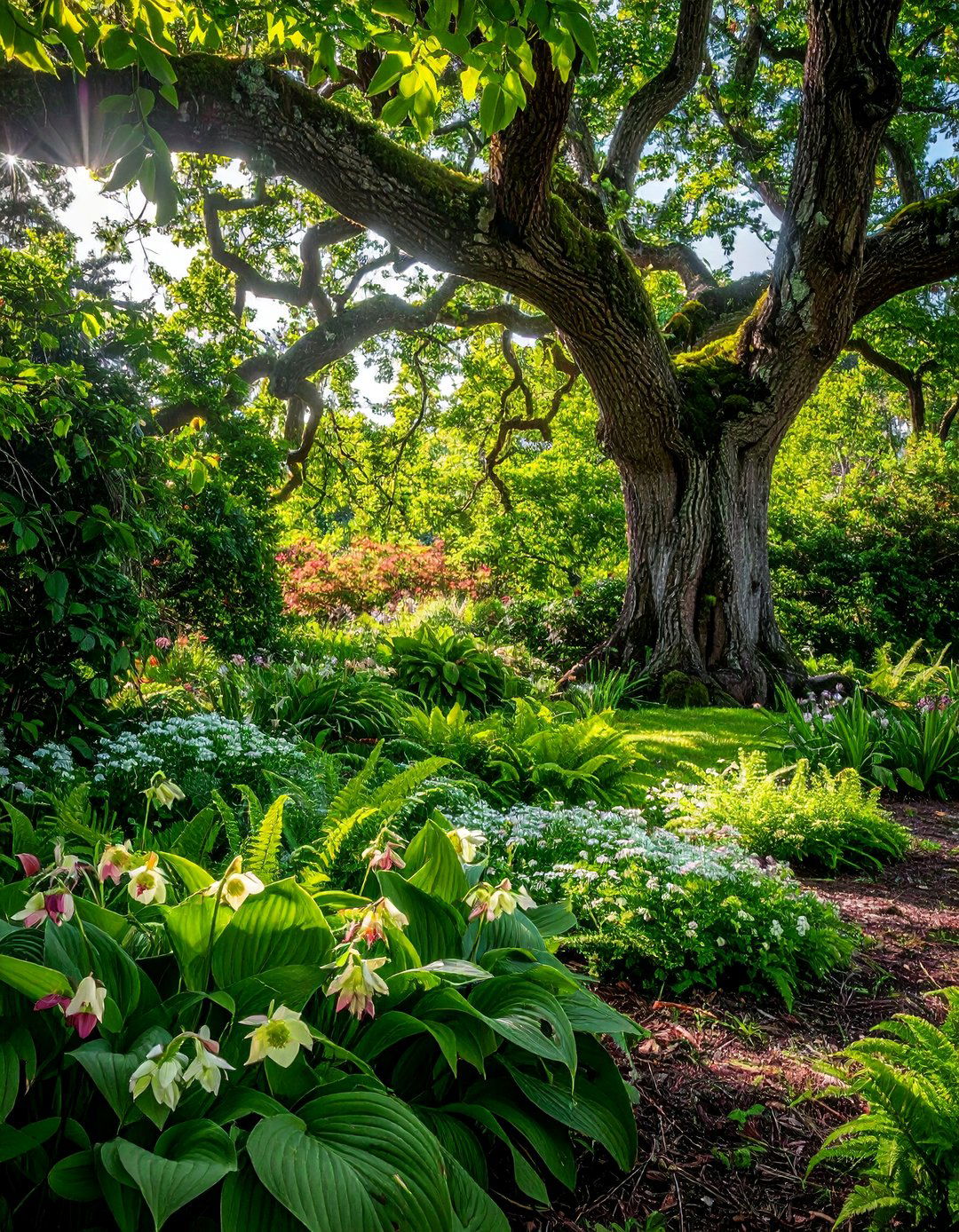
Designing a garden under a mature tree canopy requires embracing a naturalistic, woodland style. Instead of fighting the conditions, work with them by selecting plants that naturally thrive in the dappled light and dry soil found at the base of trees. Plant in layers, starting with tough groundcovers like barrenwort (Epimedium) or wild ginger (Asarum) that can handle root competition. Add mid-layer interest with native ferns, Solomon's seal, and hellebores. This approach creates a self-sustaining plant community that looks as though it has always been there, transforming a challenging area into a serene, forest-floor ecosystem that feels both effortless and beautiful.
14. A Shady Garden with Outdoor Lighting
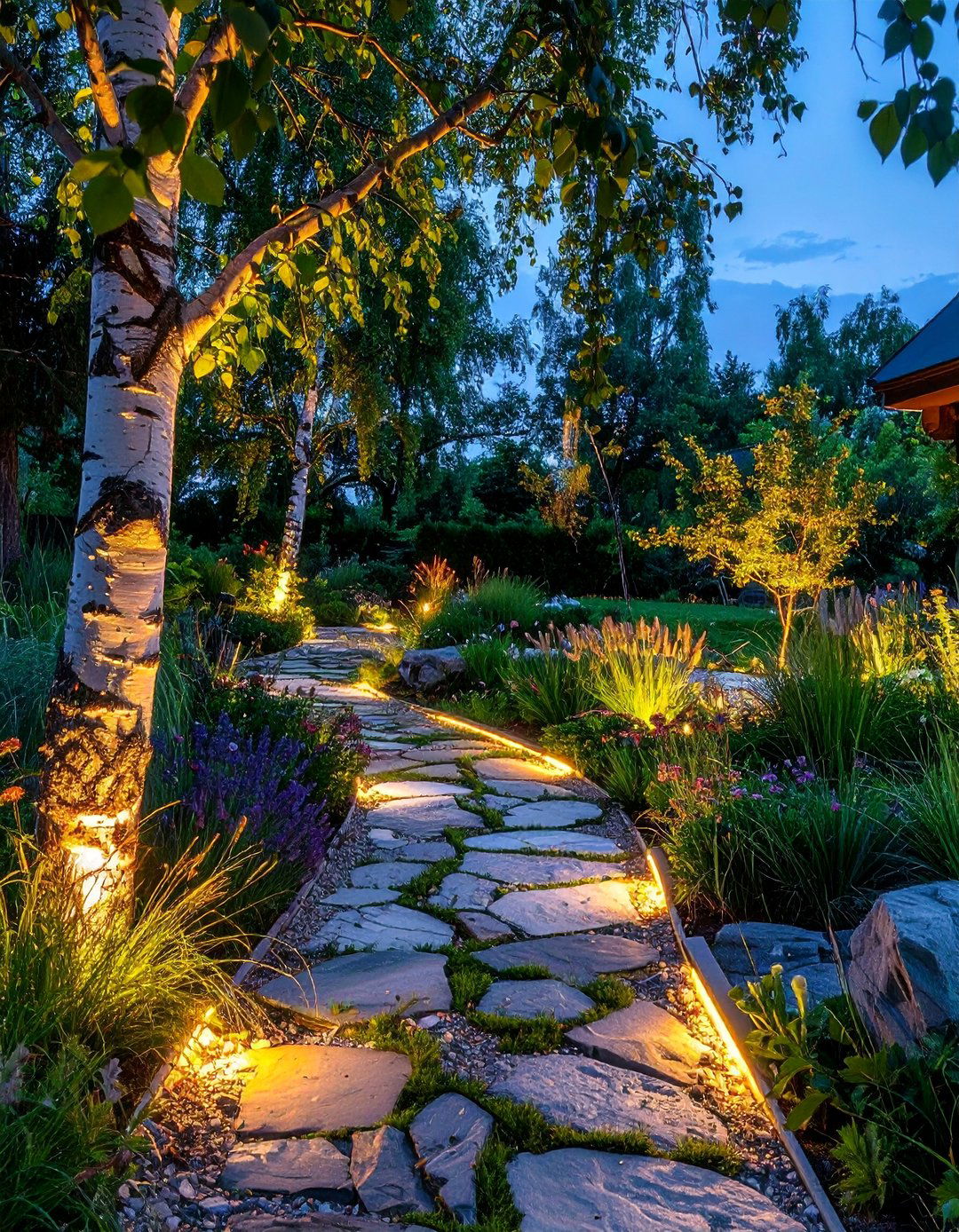
Strategic outdoor lighting can dramatically extend the enjoyment of your shady garden into the evening hours. Well-placed fixtures can transform the space, creating an enchanting and magical atmosphere after dusk. Use uplighting to highlight the beautiful bark of a tree or the intricate structure of a large fern. Path lights can guide the way along a walkway, ensuring safety while adding a gentle glow. Spotlights can draw attention to a special statue, a water feature, or a particularly stunning plant specimen. Low-voltage LED lighting is energy-efficient and allows you to create a subtle ambiance, turning your cool daytime retreat into a mysterious nighttime wonderland.
15. A Layered Planting Shady Garden
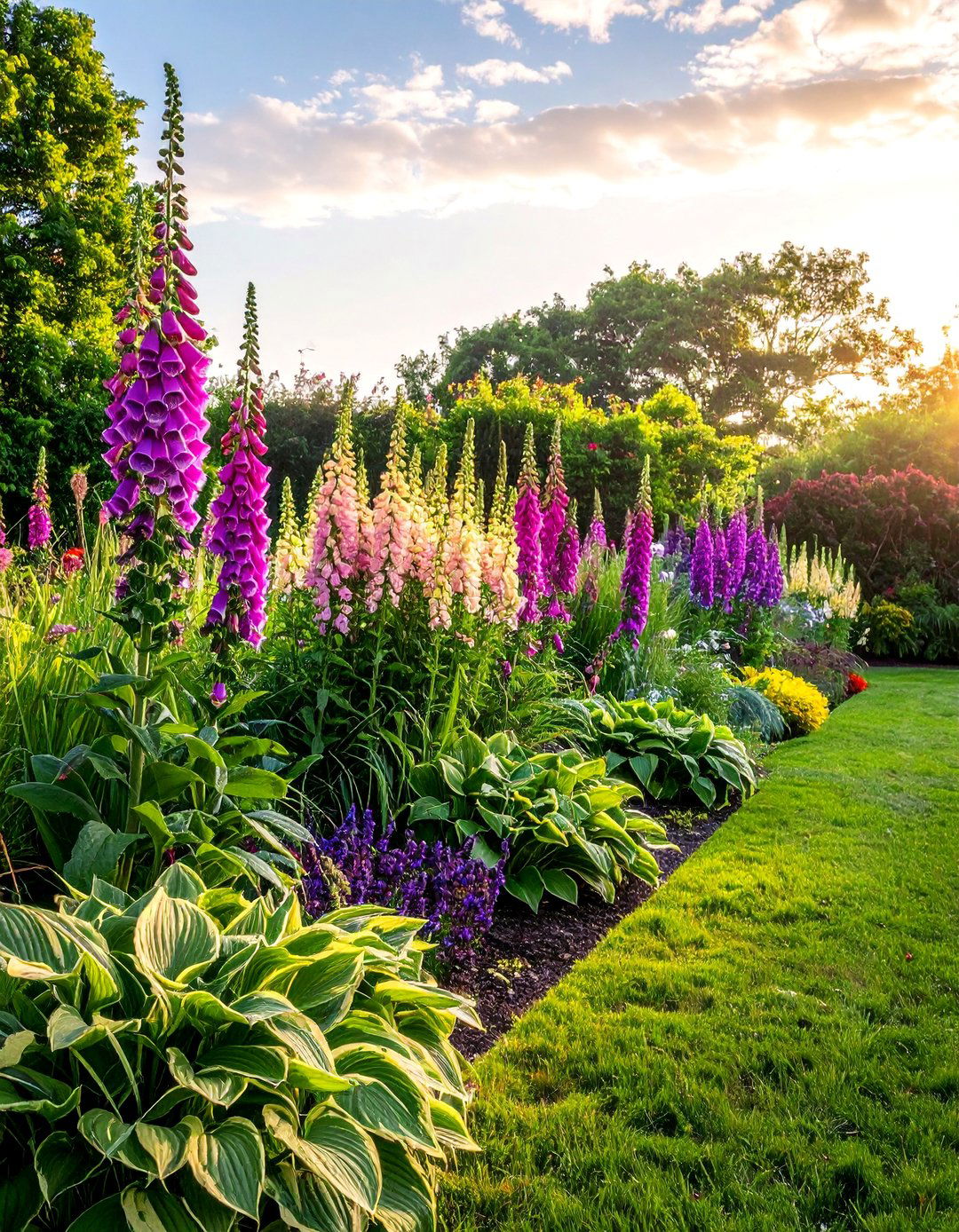
Creating a layered planting scheme is key to a visually rich and dynamic shady garden. This technique involves arranging plants in tiers based on their height and form, mimicking the structure of a natural woodland. Start with a canopy of shade trees or large shrubs as the uppermost layer. Below that, add medium-sized shrubs like hydrangeas or rhododendrons. The next layer should consist of taller perennials such as foxgloves and astilbes. Finally, fill in the lowest level with groundcovers and low-growing plants like hostas, ferns, and ajuga. This approach creates depth, complexity, and a lush, full appearance from every vantage point.
16. A Shady Cottage Garden Design
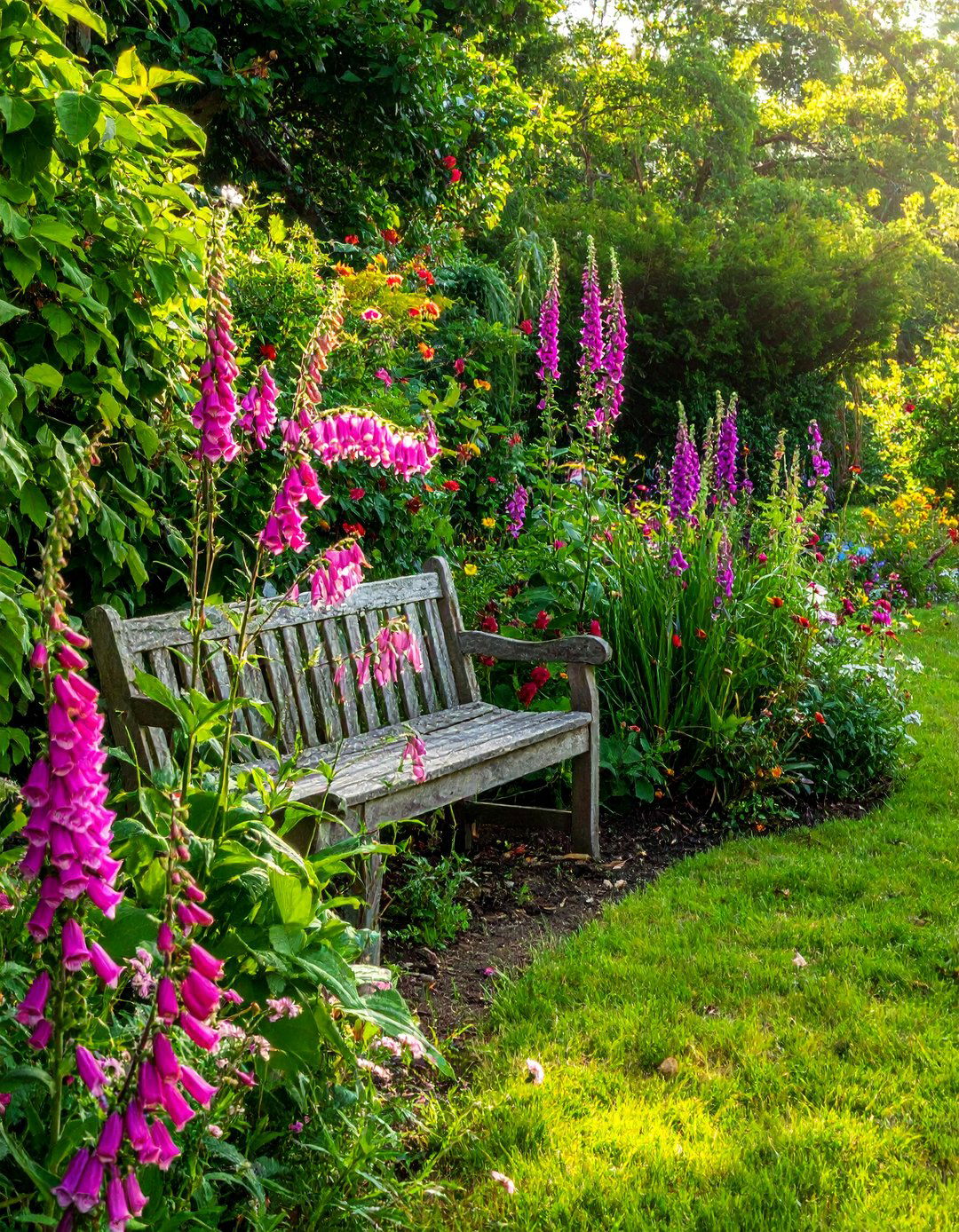
A cottage garden style can be beautifully adapted for a shady location, resulting in a charming and romantic space. While traditional cottage gardens are known for sun-loving flowers, a shady version focuses on texture, foliage, and shade-tolerant bloomers. Combine plants like columbine, bleeding hearts, foxgloves, and astilbes for their delicate flowers and interesting forms. Weave them together in dense, informal plantings alongside a variety of ferns and hostas. Incorporate rustic elements like a weathered wooden bench, a simple arbor, or a stone birdbath to complete the quaint, whimsical aesthetic. This creates a cozy and enchanting retreat with a touch of nostalgia.
17. A Groundcover Shady Garden
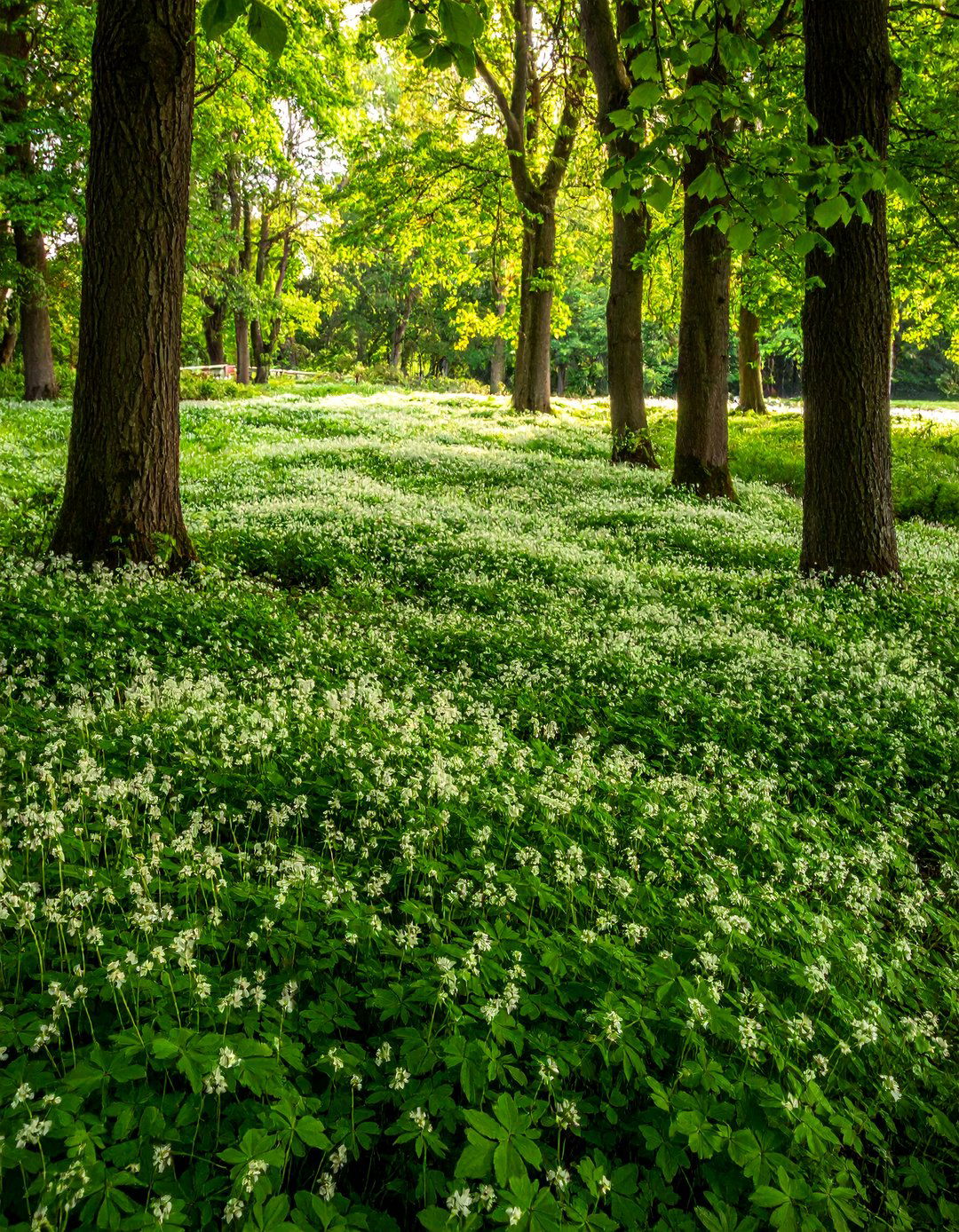
Utilizing groundcovers is an effective way to create a lush, living carpet in a shady garden, especially in areas where turfgrass fails to thrive. These low-growing plants spread to suppress weeds, retain soil moisture, and provide a continuous mat of foliage and, often, flowers. Choose from a wide variety of textures and colors, such as the glossy leaves of European ginger, the delicate flowers of sweet woodruff, or the colorful foliage of lamium. Planting a single species in a large swath creates a simple, elegant look, while mixing different groundcovers can produce a rich, tapestry-like effect, covering the ground with beautiful, low-maintenance greenery.
18. A Shady Garden with a Small Pond
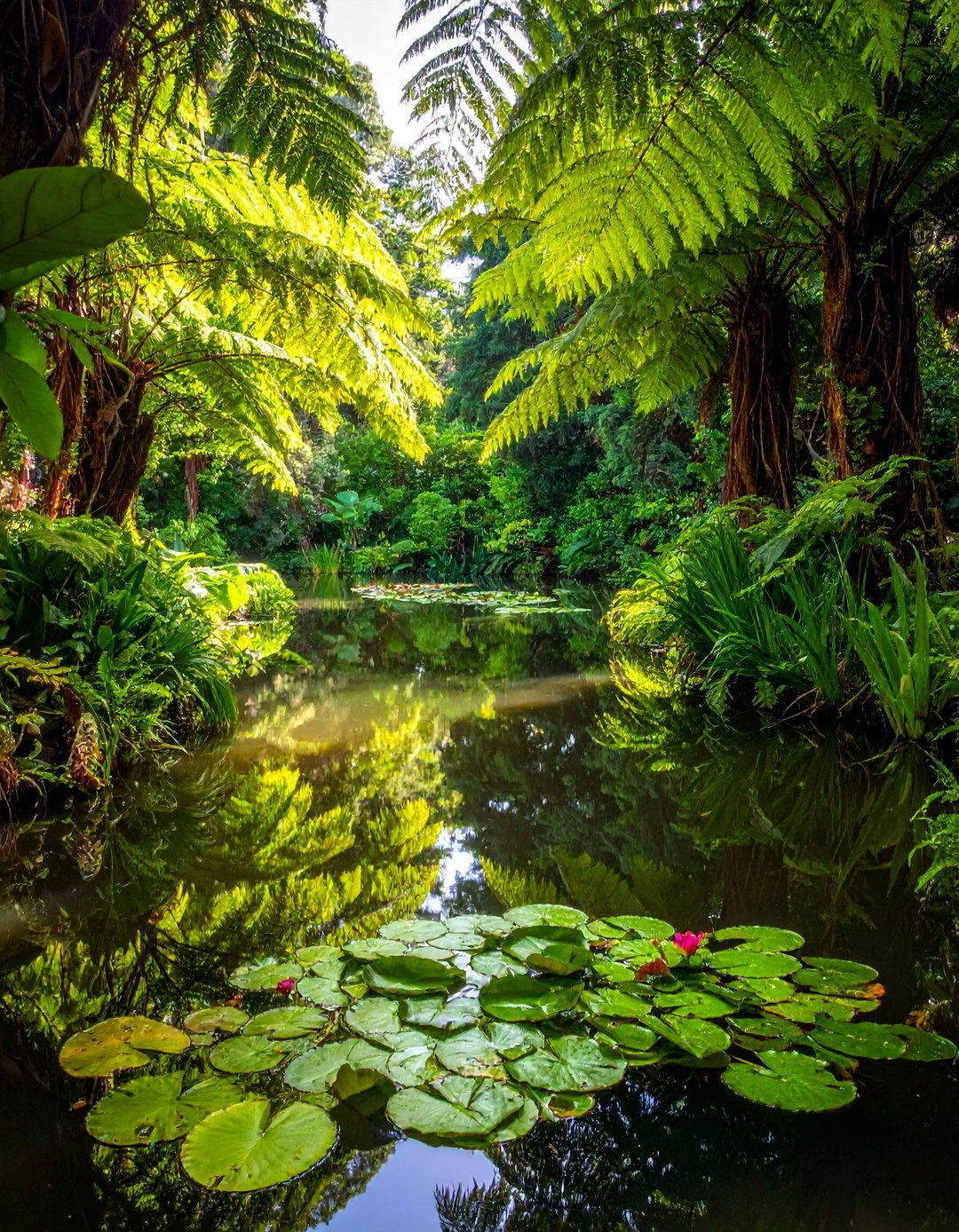
A small pond can become the mesmerizing centerpiece of a shady garden, introducing a unique habitat and a powerful sense of tranquility. The still or gently moving water reflects the overhanging foliage and the sky, creating a window of light in a dark space. You can add aquatic plants like water lilies that tolerate partial shade and surround the edges with marginal plants such as irises and marsh marigolds. The pond will attract wildlife like dragonflies and birds, adding another layer of life and movement to your garden. This feature provides a powerful focal point and enhances the cool, restorative atmosphere of your shady retreat.
19. A Modern Minimalist Shady Garden
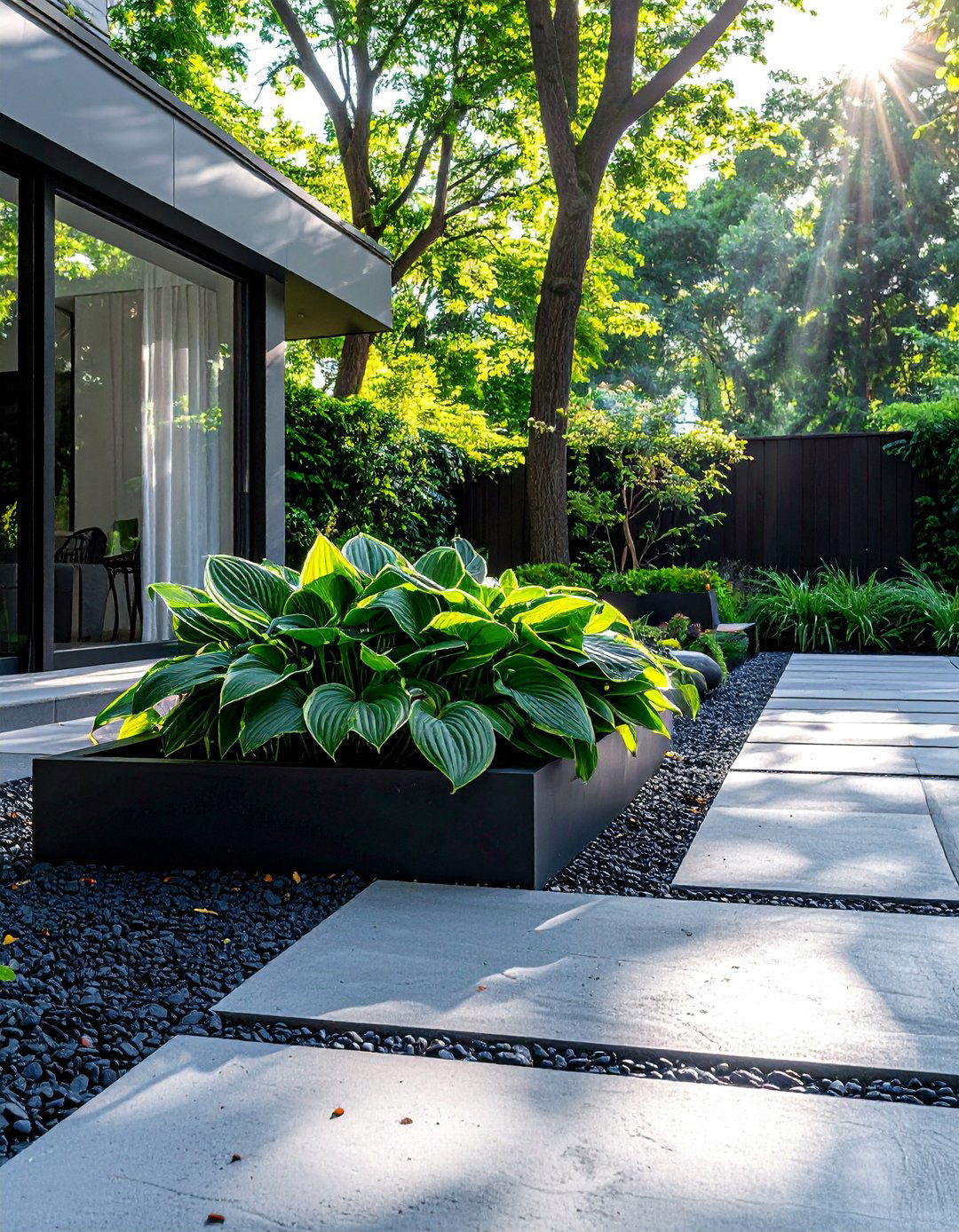
Applying modern minimalist principles to a shady garden results in a clean, sophisticated, and serene outdoor space. This design style emphasizes strong geometric lines, a limited color palette, and a focus on form and texture over abundant flowers. Use architectural plants with bold foliage, like hostas with solid, sculptural leaves or horsetail reed planted in clean rows. Hardscaping is key, with elements like smooth concrete pavers, a dark gravel groundcover, or a sleek metal planter. The design is uncluttered and intentional, creating a calm, contemplative atmosphere where the simple beauty of each plant and material can be fully appreciated.
20. A Fragrant Shady Garden
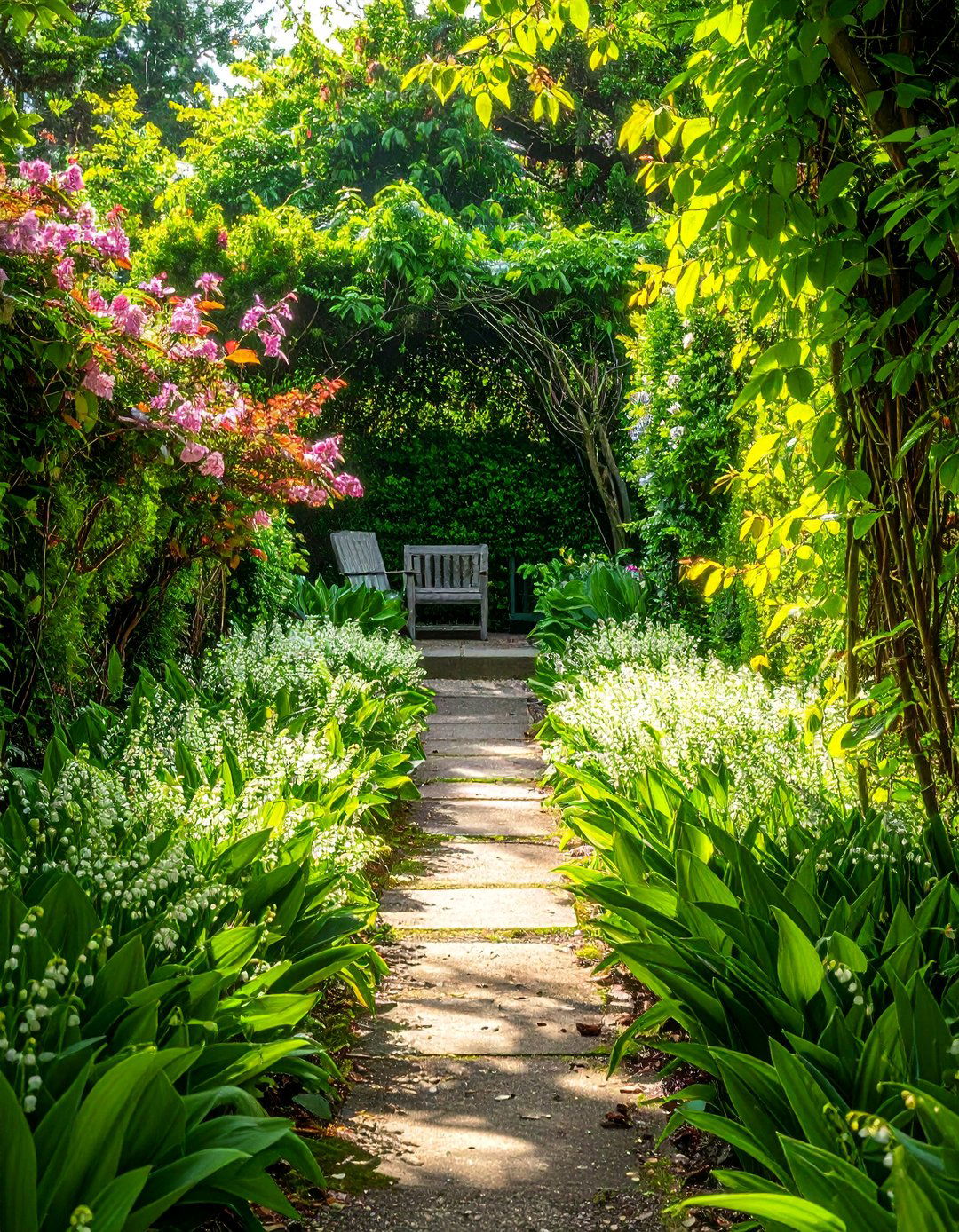
A shady garden can delight the sense of smell just as much as the sense of sight. Many shade-loving plants produce wonderfully fragrant blossoms, and their scent tends to linger in the cool, still air of a sheltered location. Plant sweet box (Sarcococca) for its powerful, sweet perfume in late winter, or lily-of-the-valley for its classic, delicate spring scent. The flowers of some hosta varieties, like 'Guacamole' or 'Fragrant Bouquet', are also surprisingly aromatic. Position these plants near a seating area or along a pathway where their fragrance can be best enjoyed, creating a multi-sensory experience in your cool garden haven.
Conclusion:
A shady garden is a canvas for creativity, not a limitation. By selecting the right plants and incorporating thoughtful design, you can cultivate a lush, cool, and captivating retreat. From the soothing sounds of a water feature to the rich tapestry of a layered foliage garden, the possibilities are vast. These ideas demonstrate that with a focus on texture, form, and shade-tolerant species, you can transform any dimly lit corner into a vibrant, tranquil, and deeply rewarding outdoor space. Your shady area holds the potential to become the most peaceful and cherished part of your landscape.

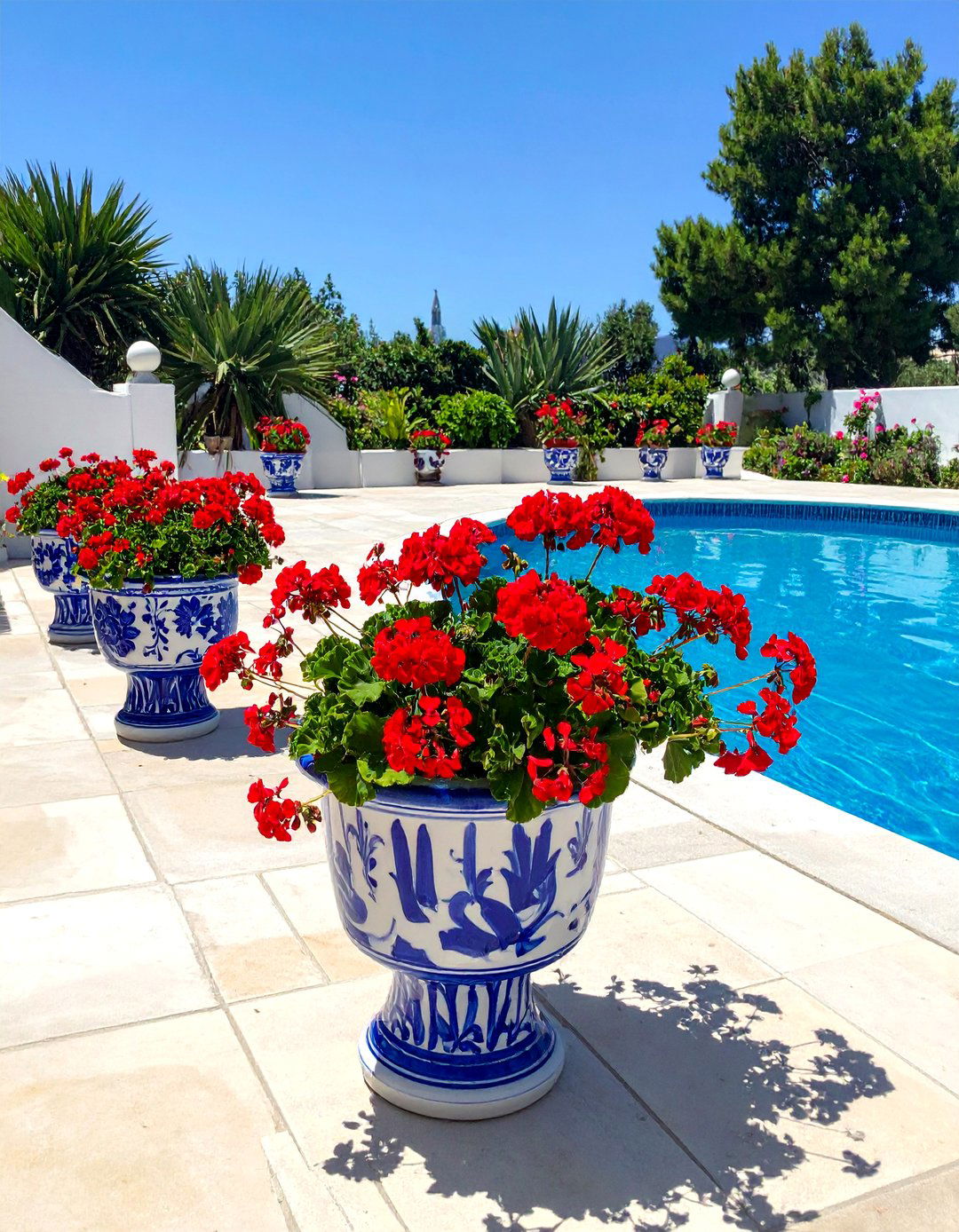
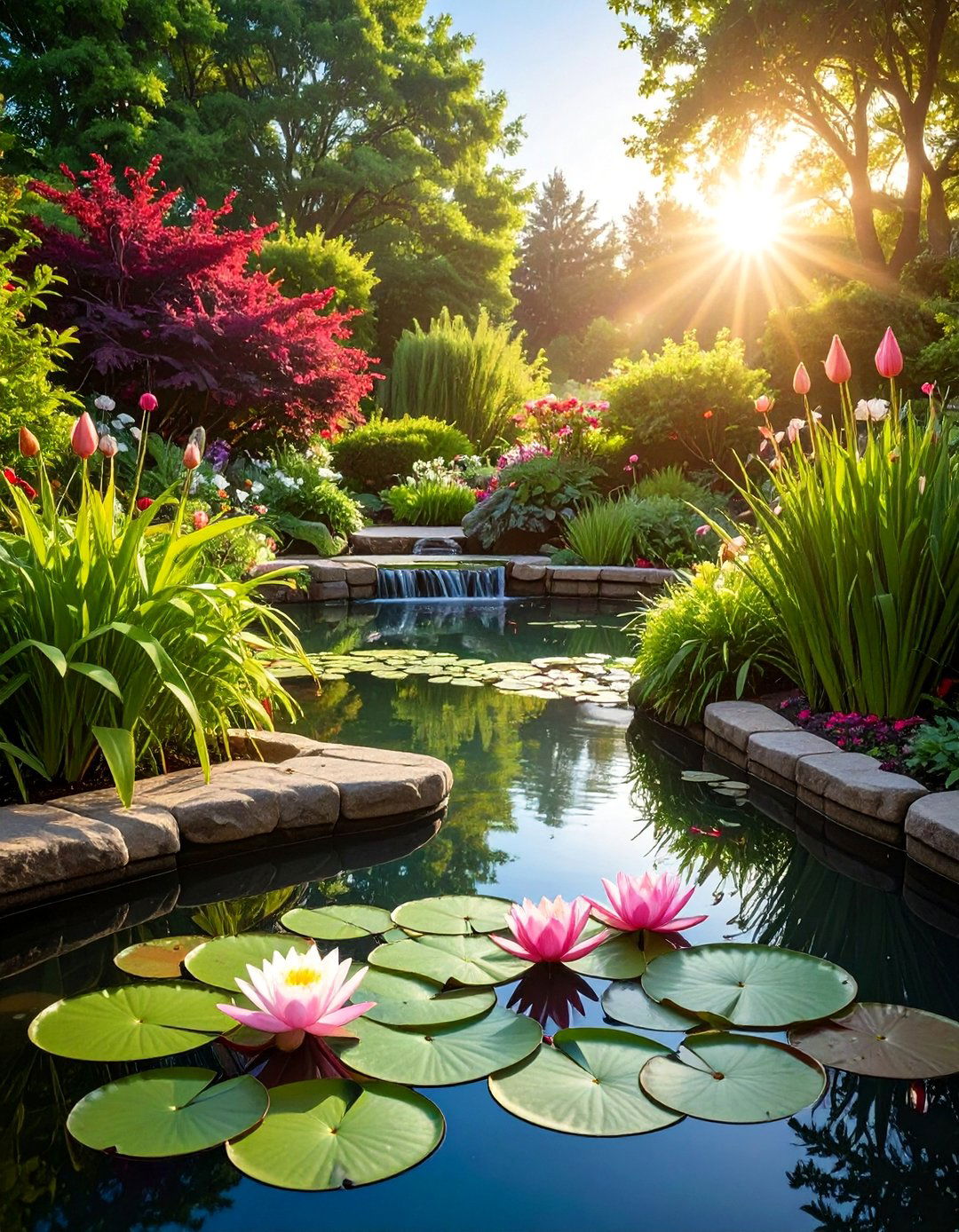
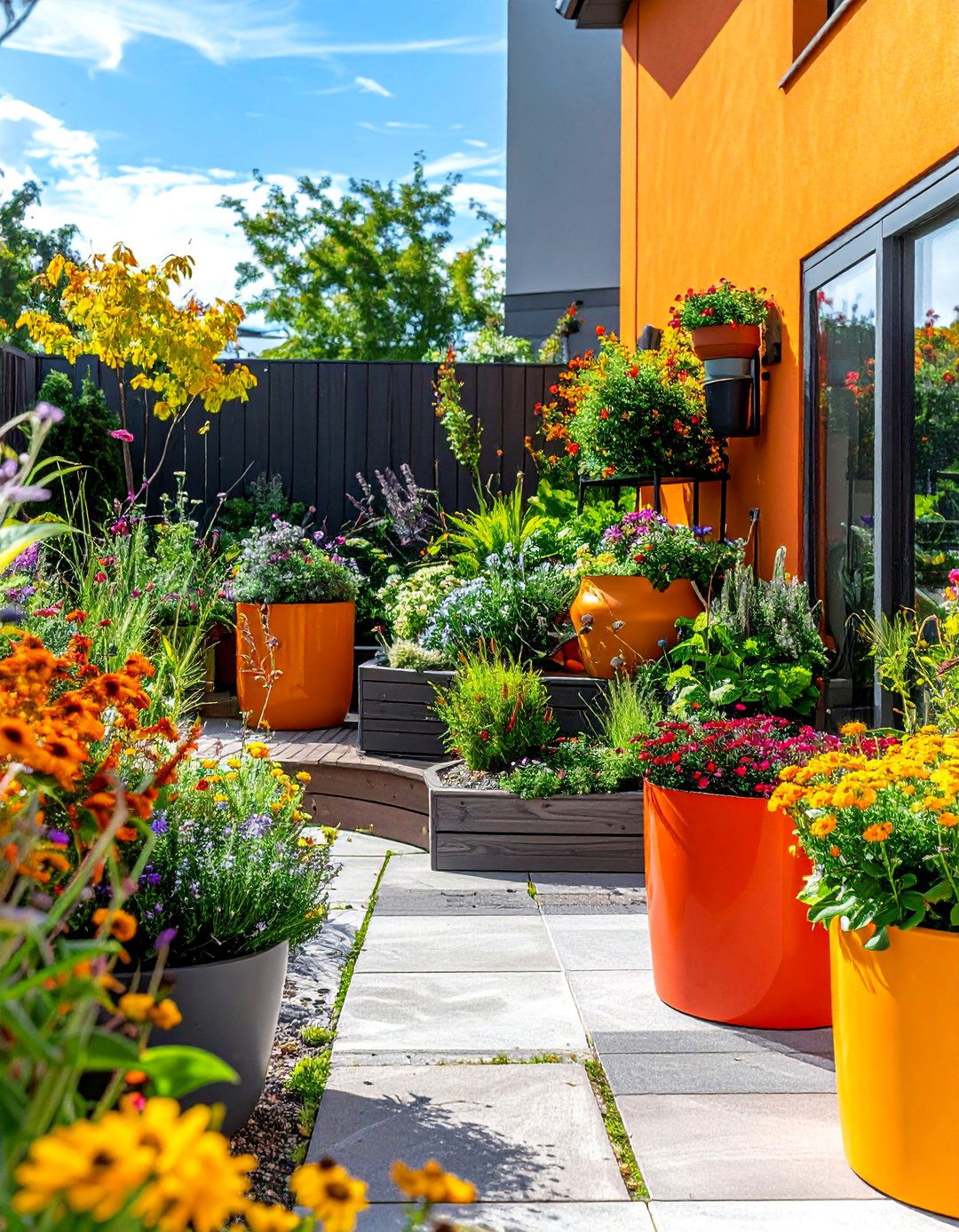
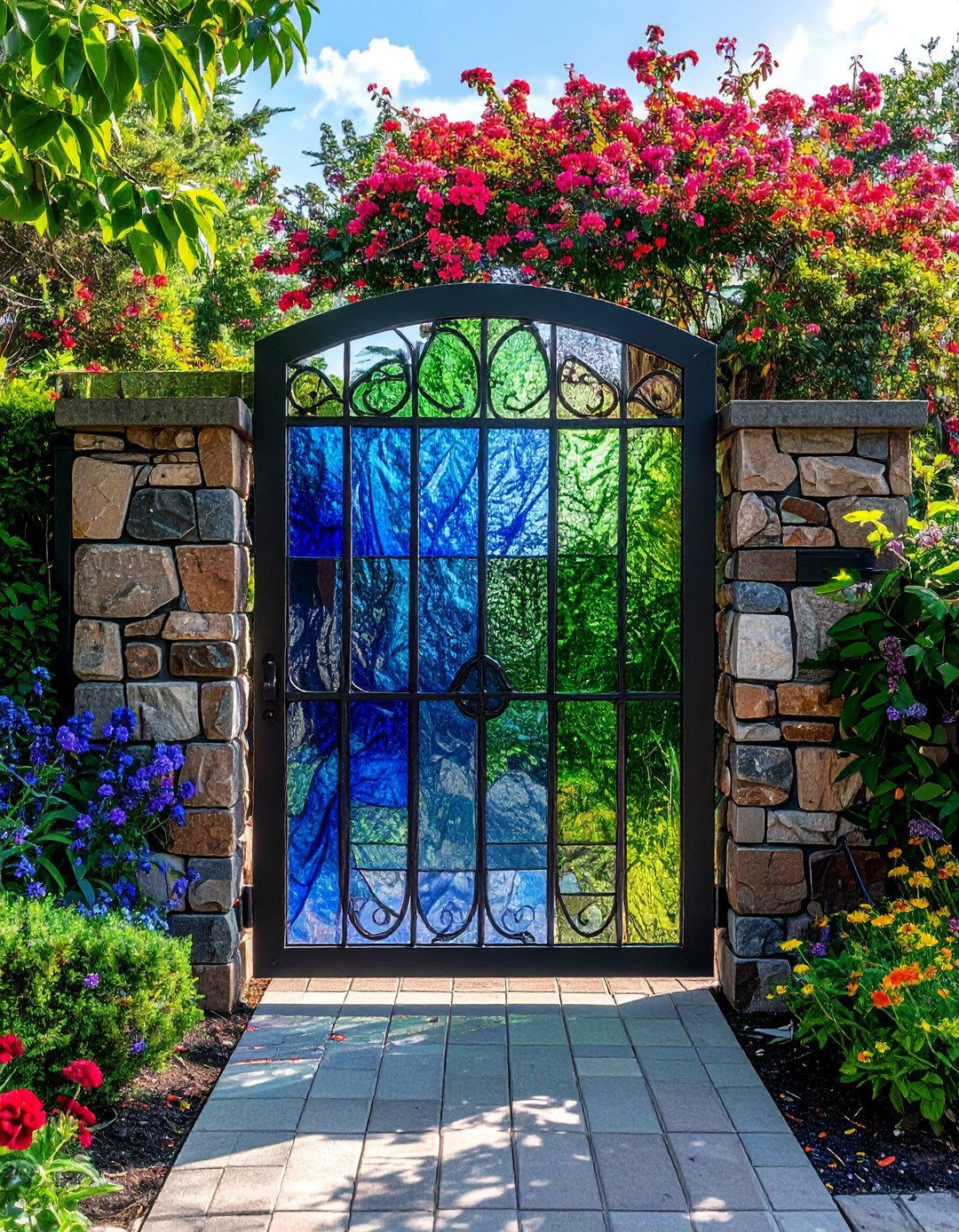
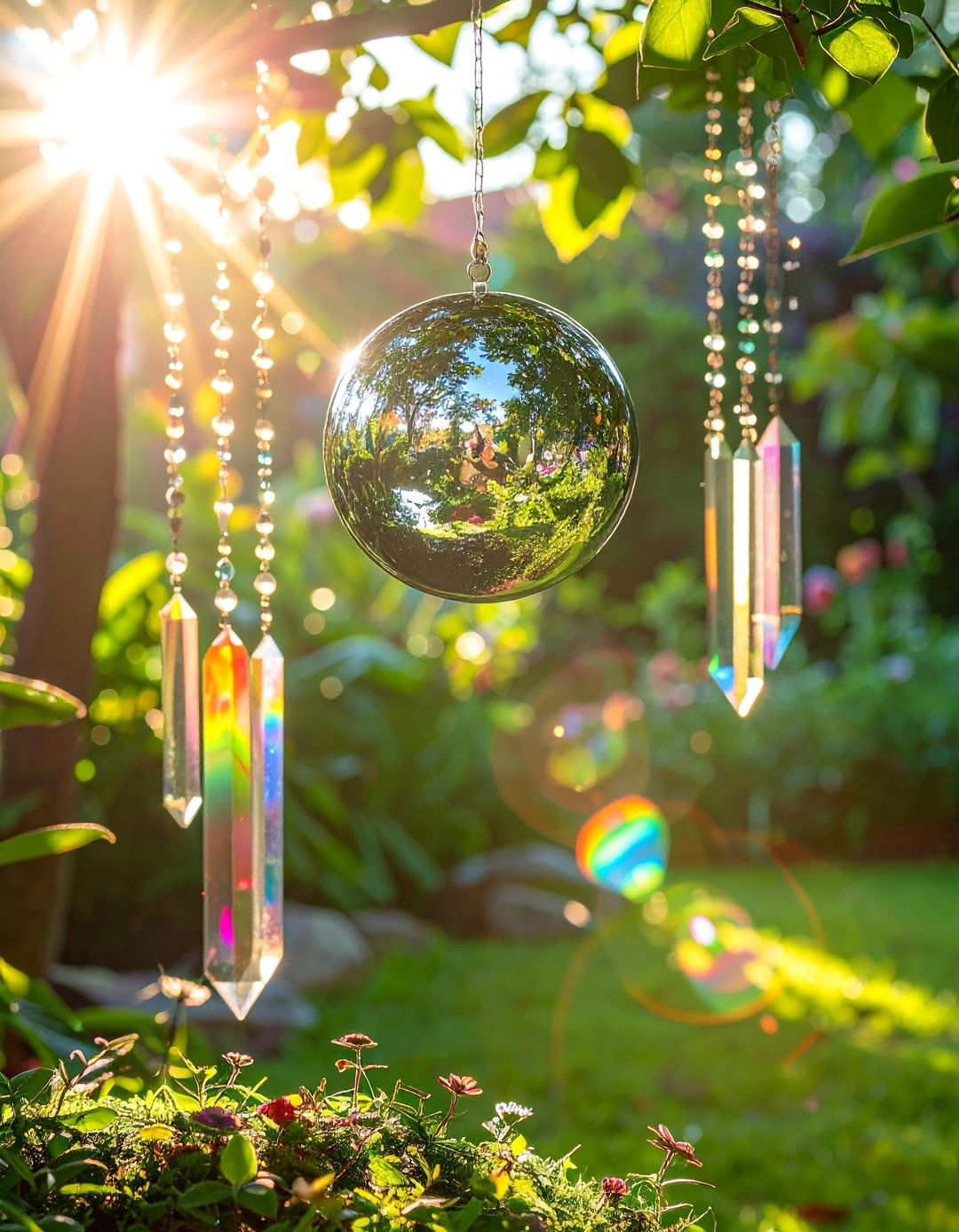
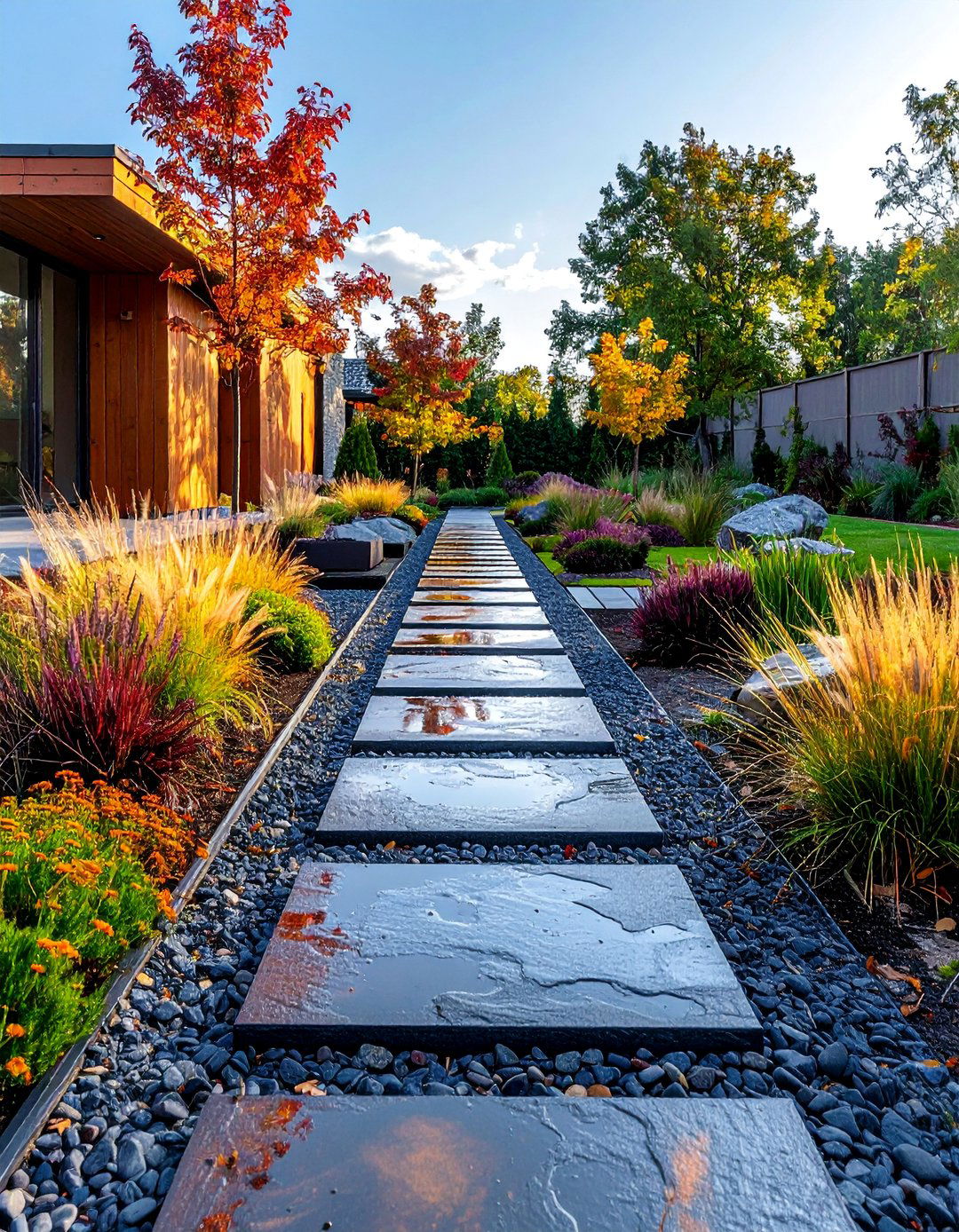
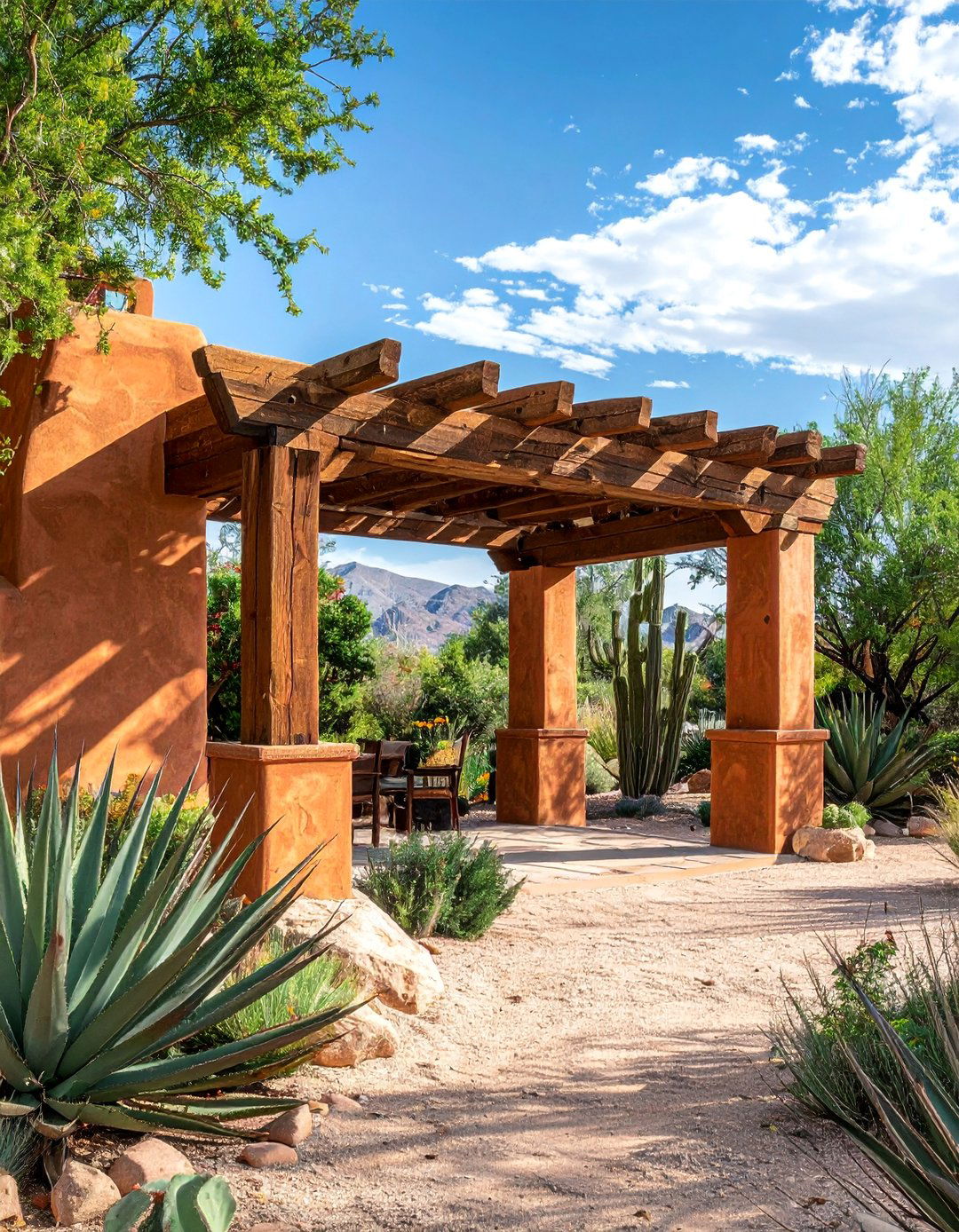
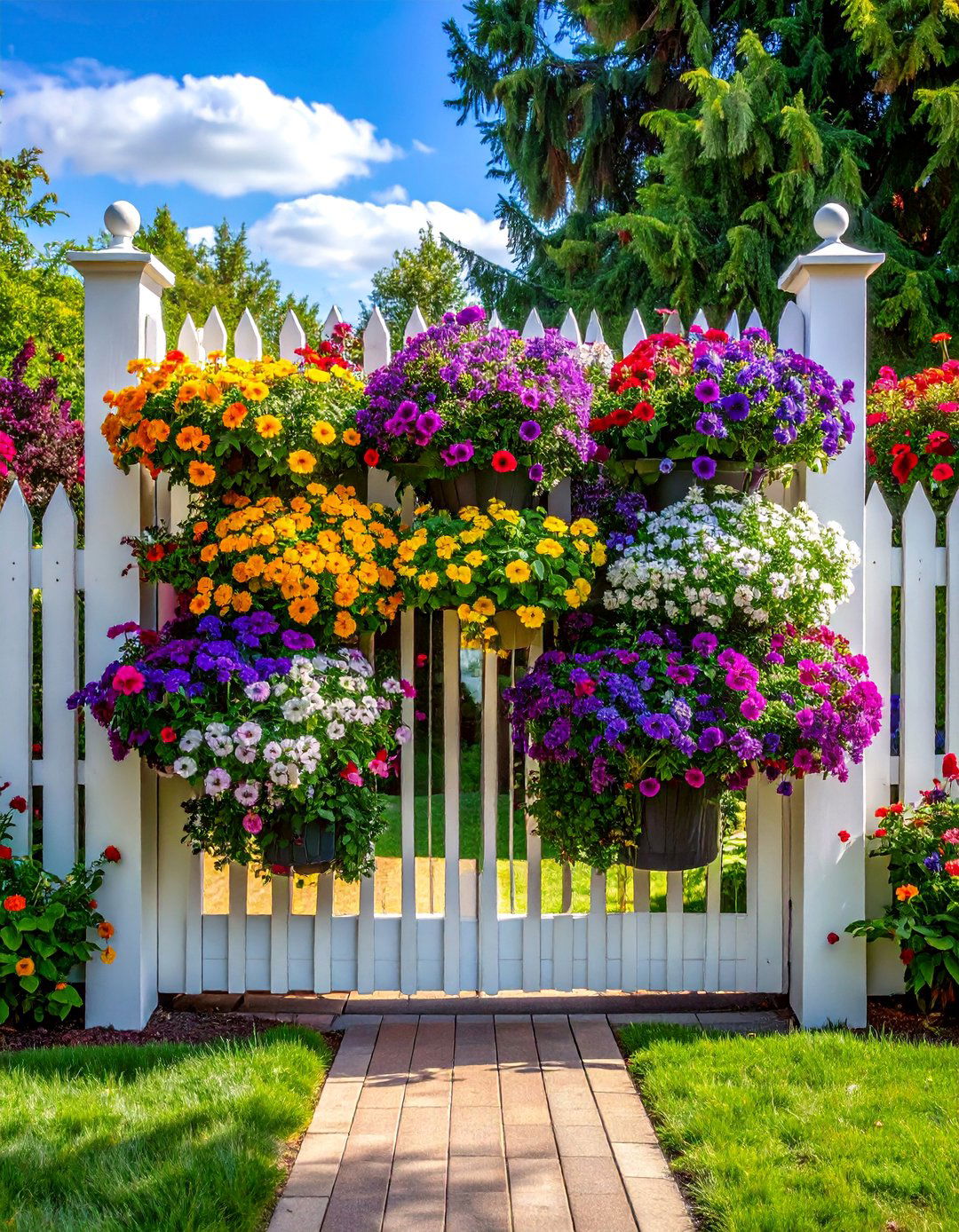
Leave a Reply